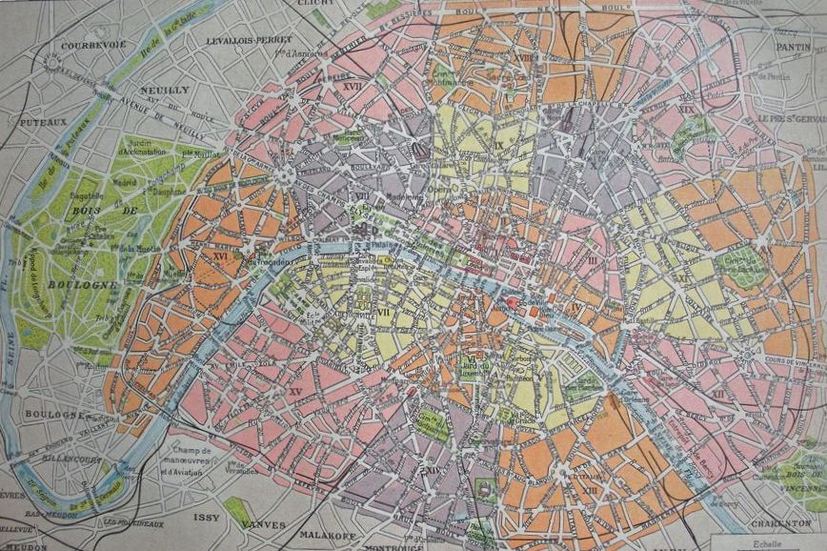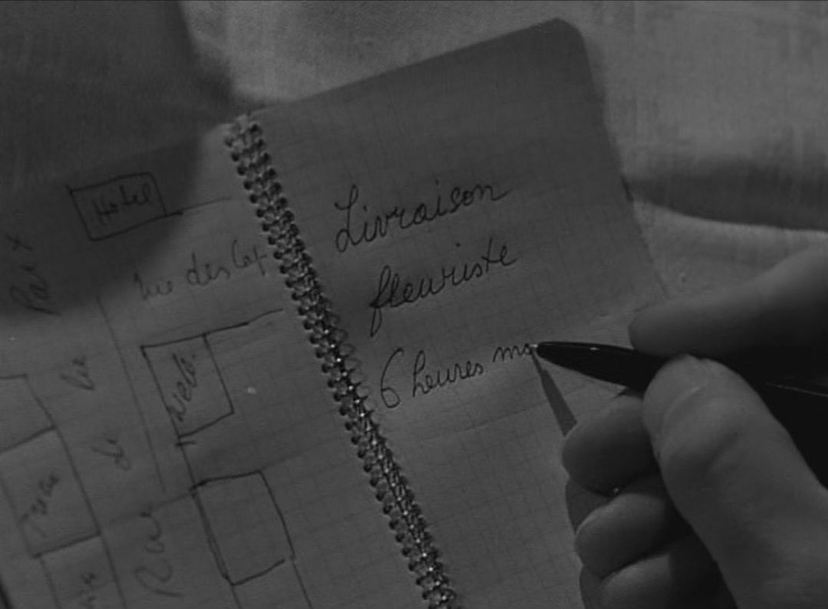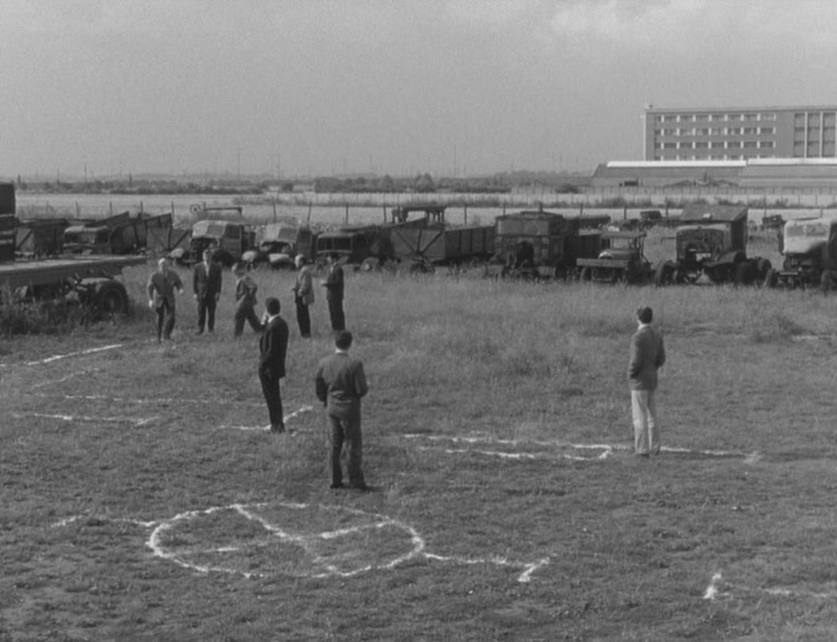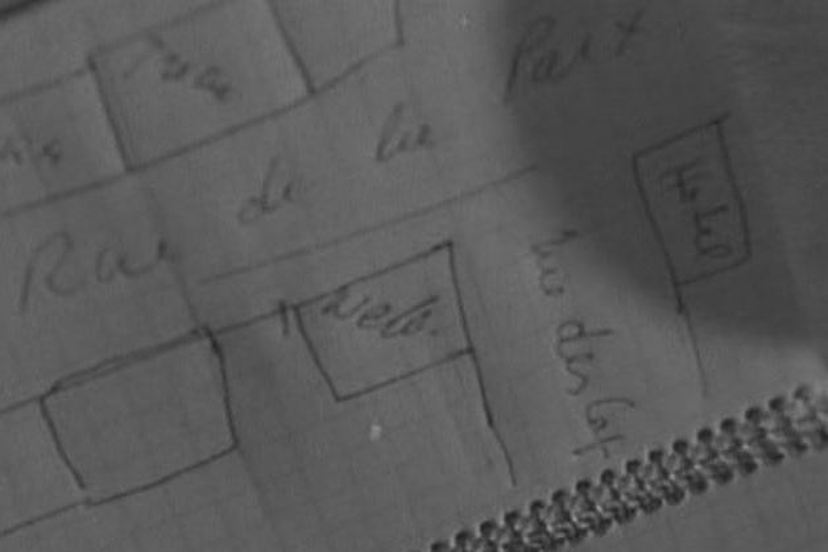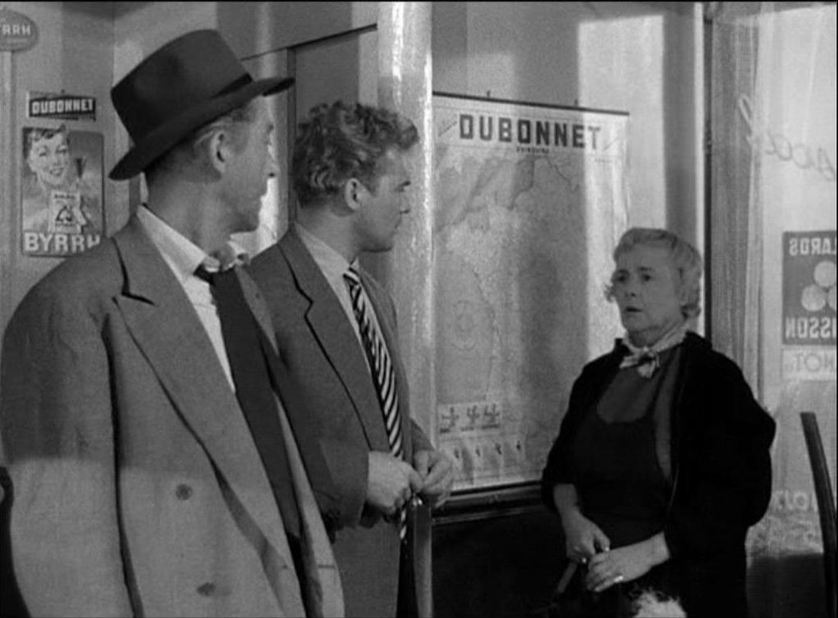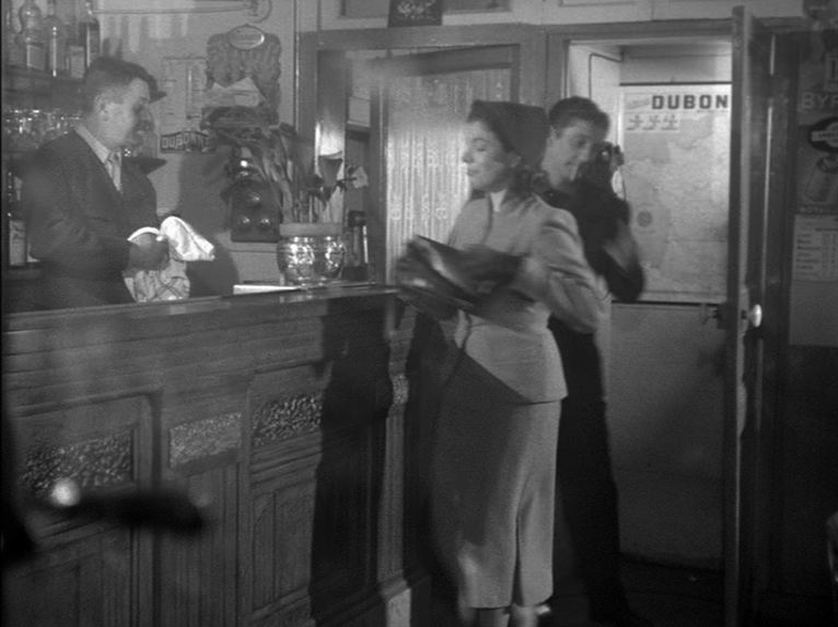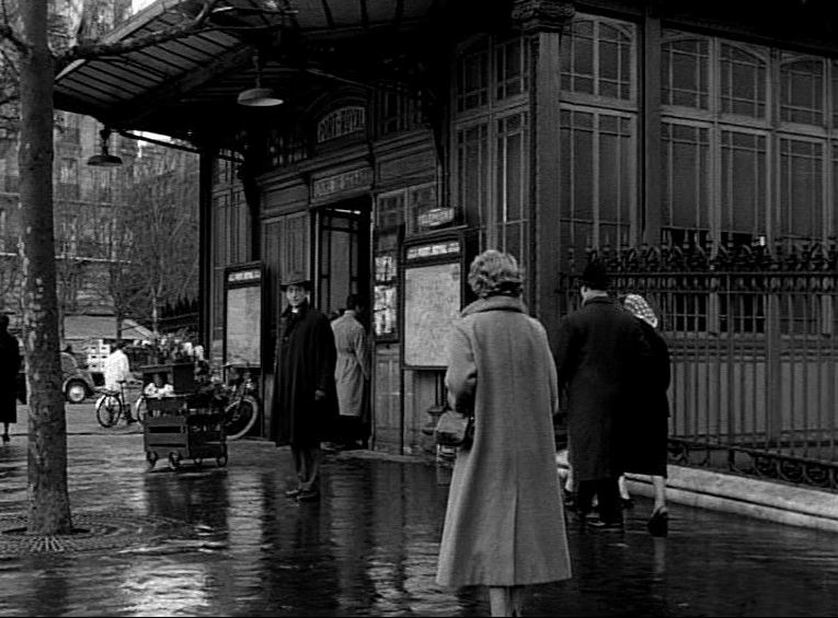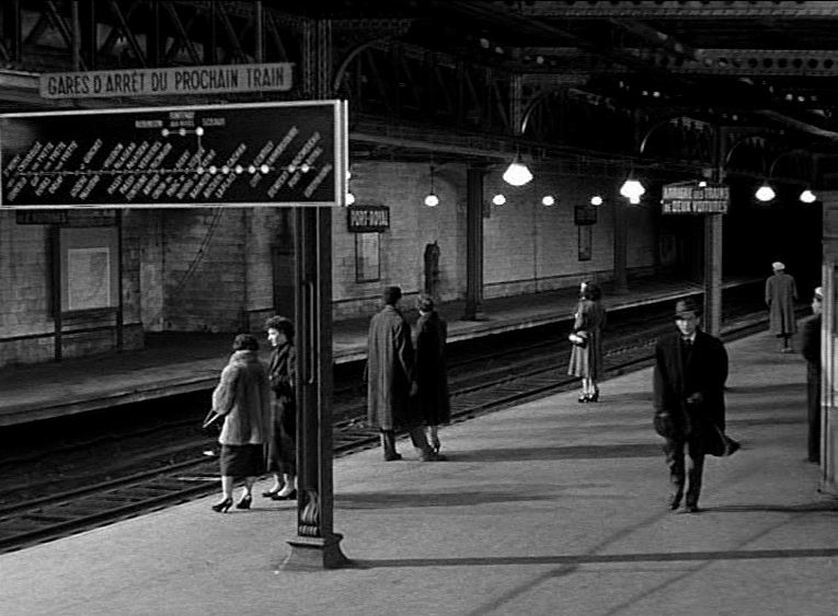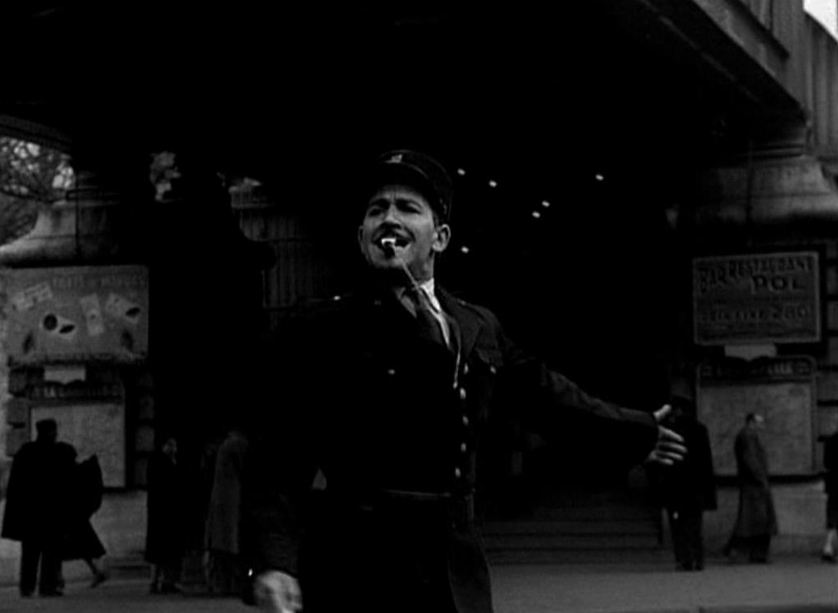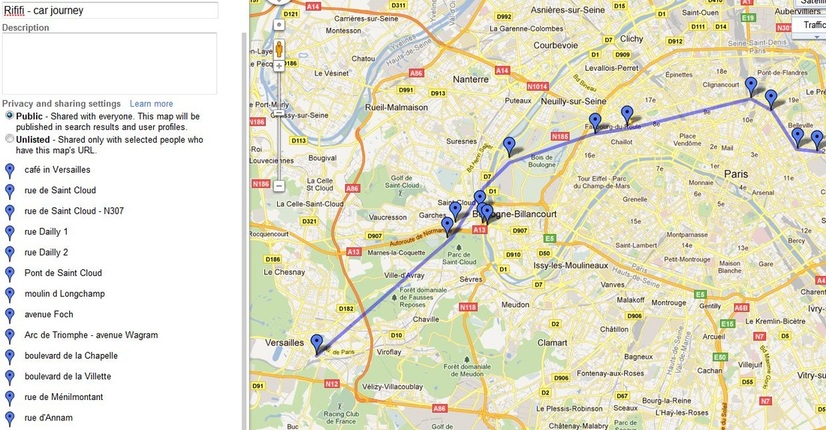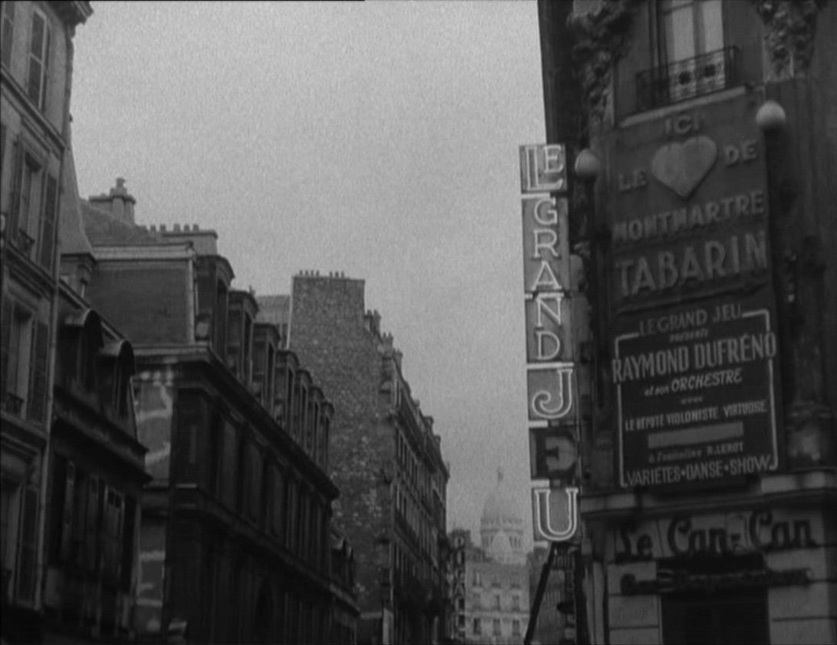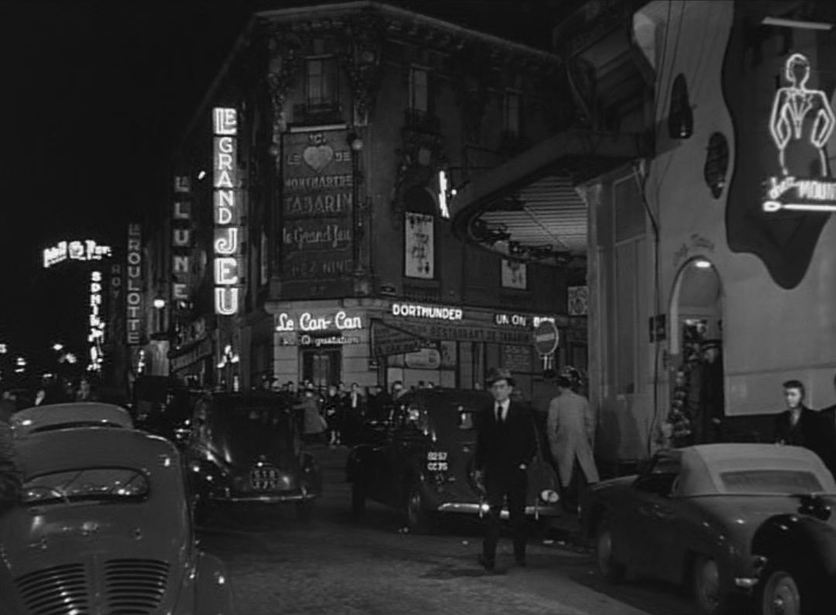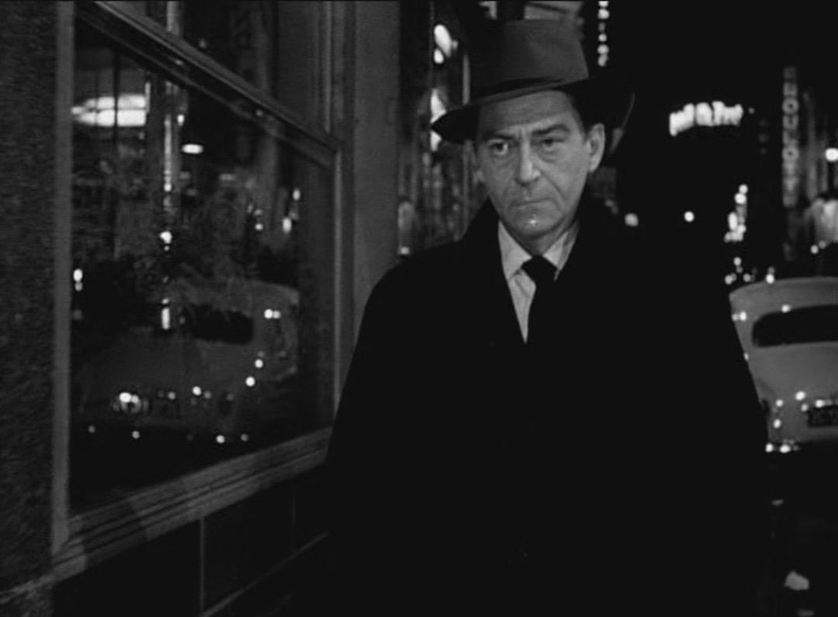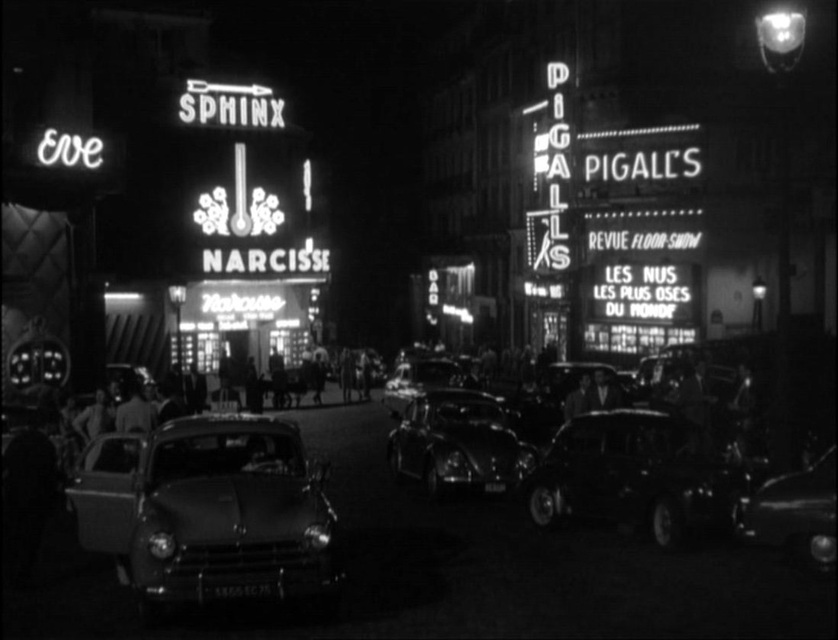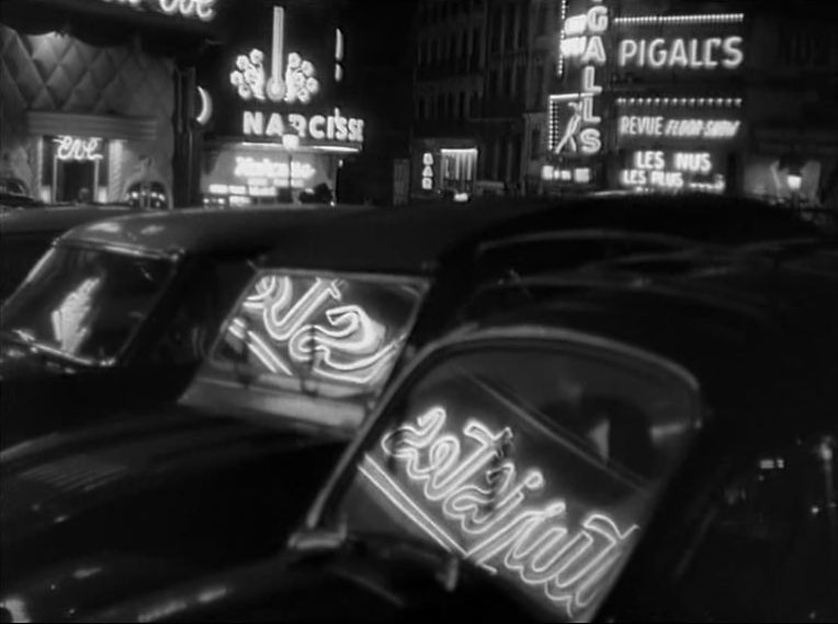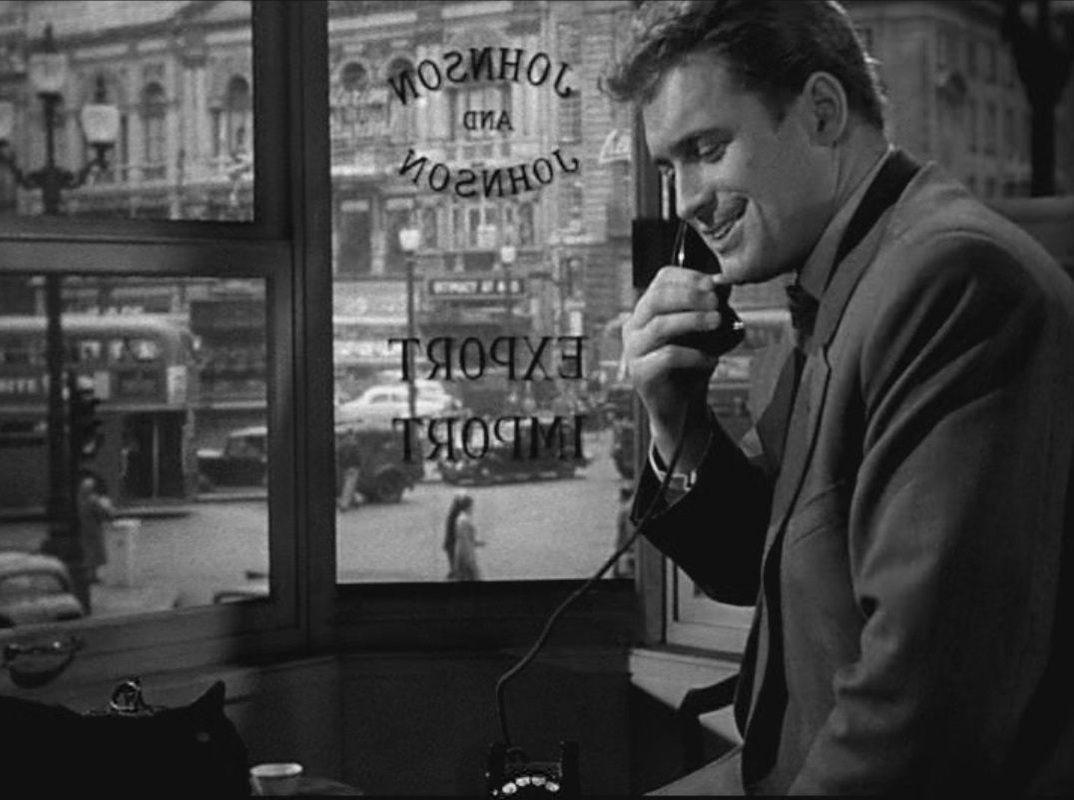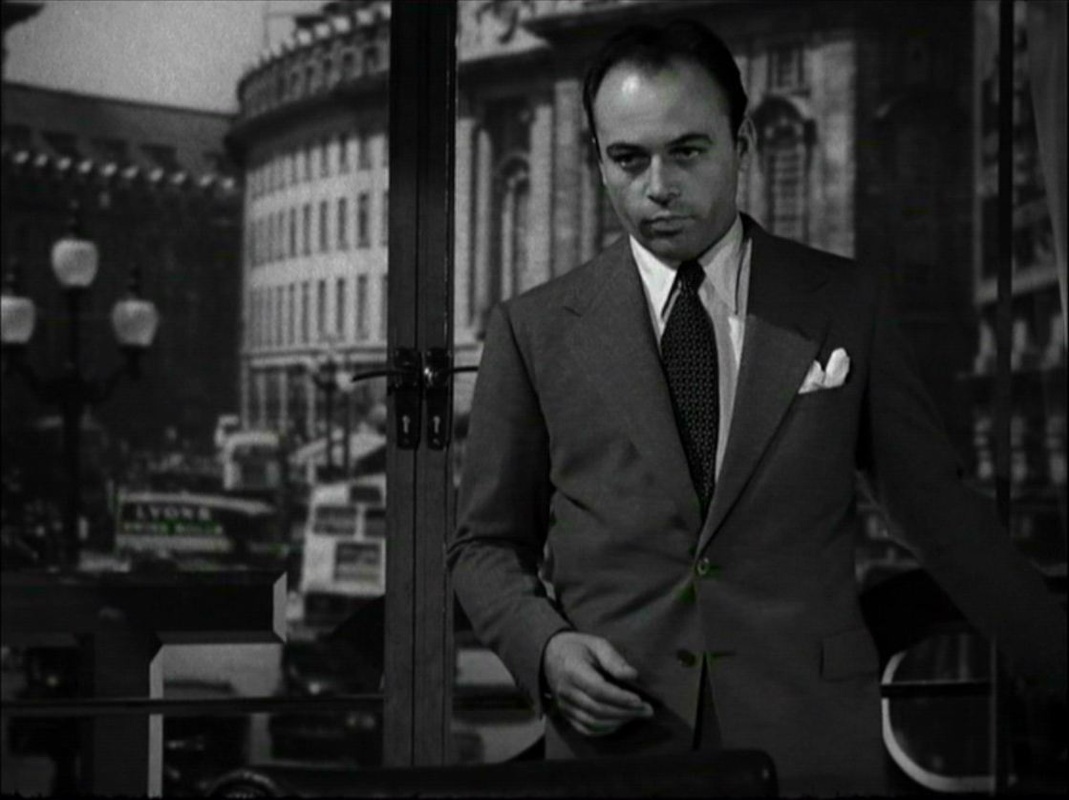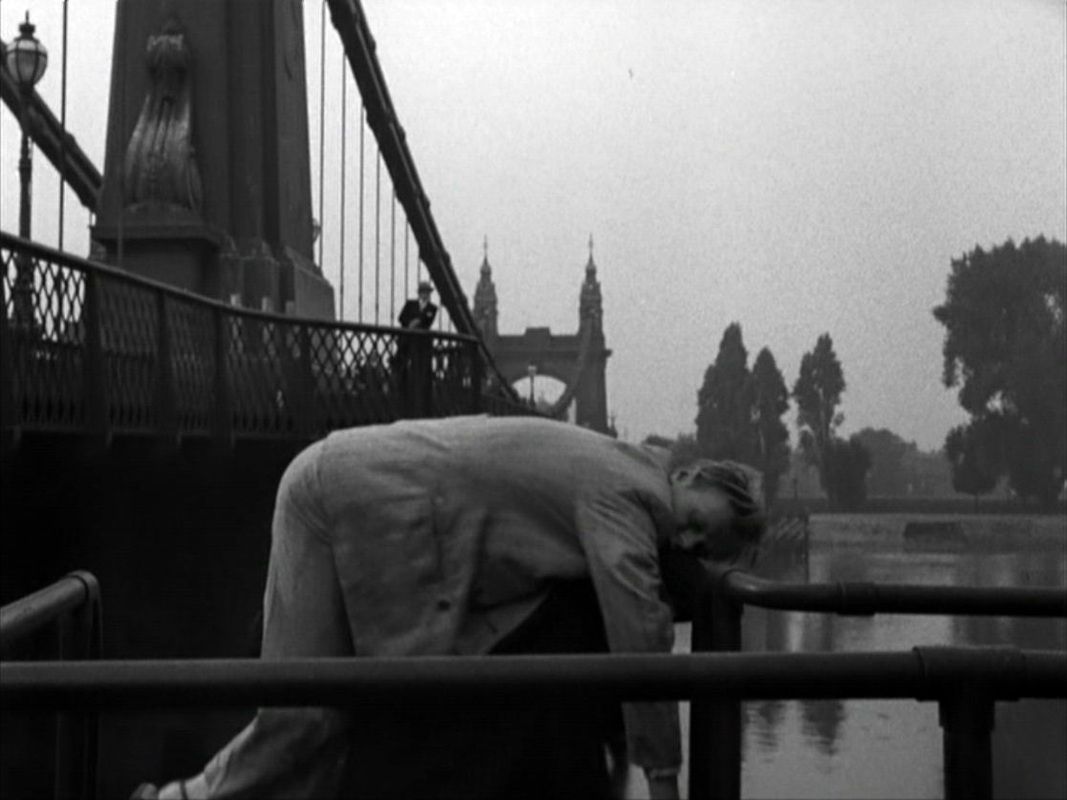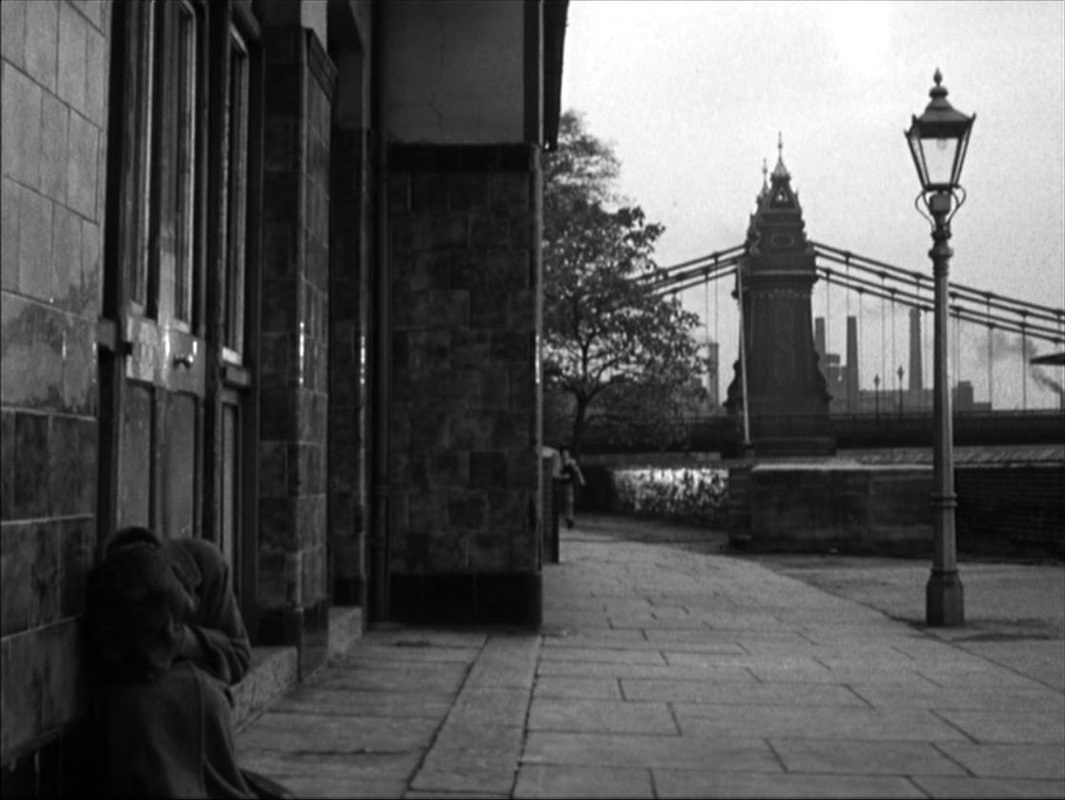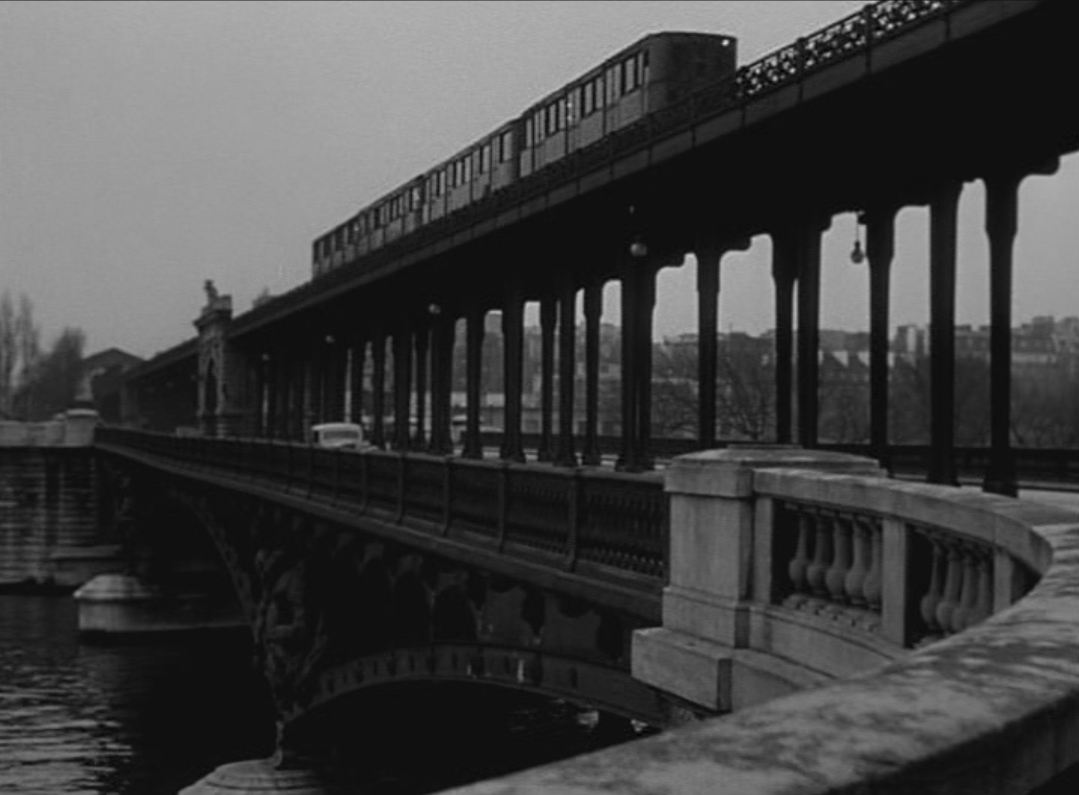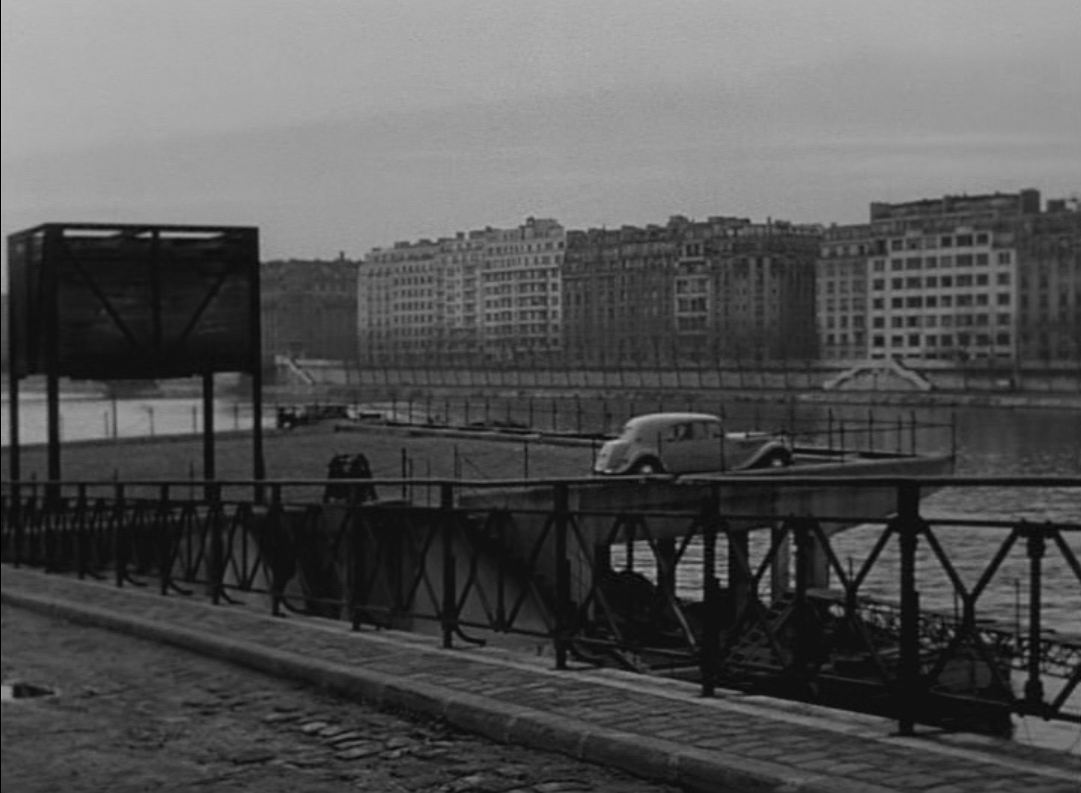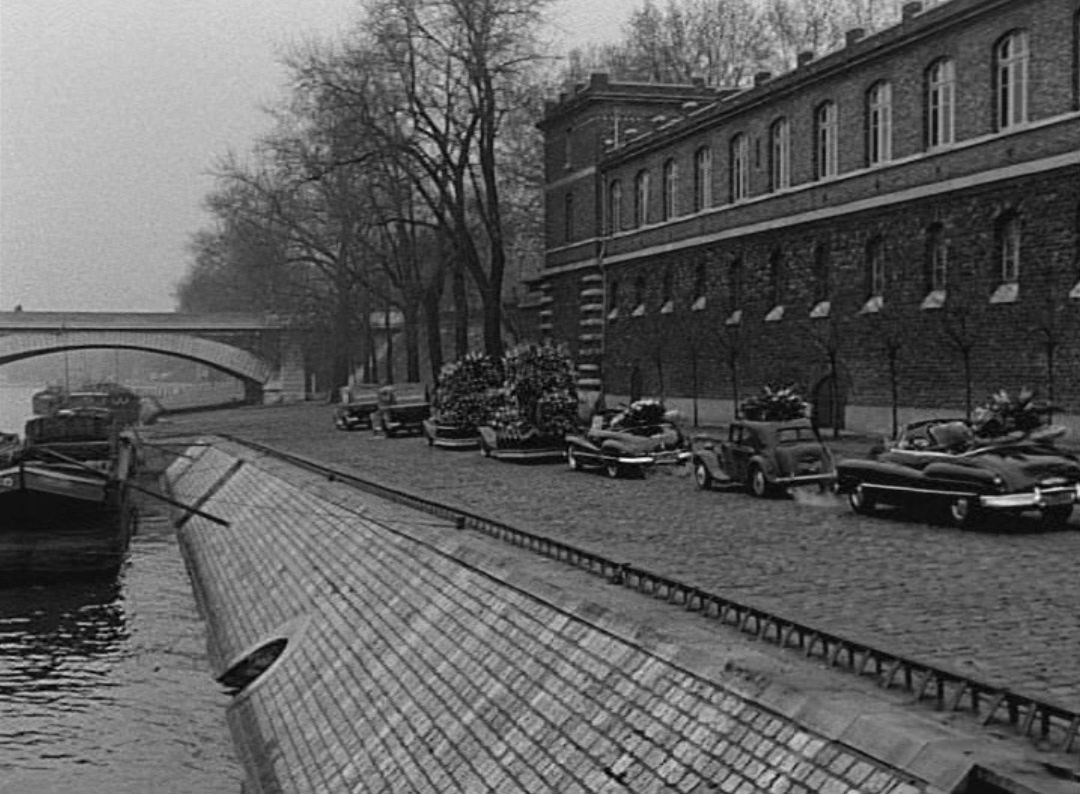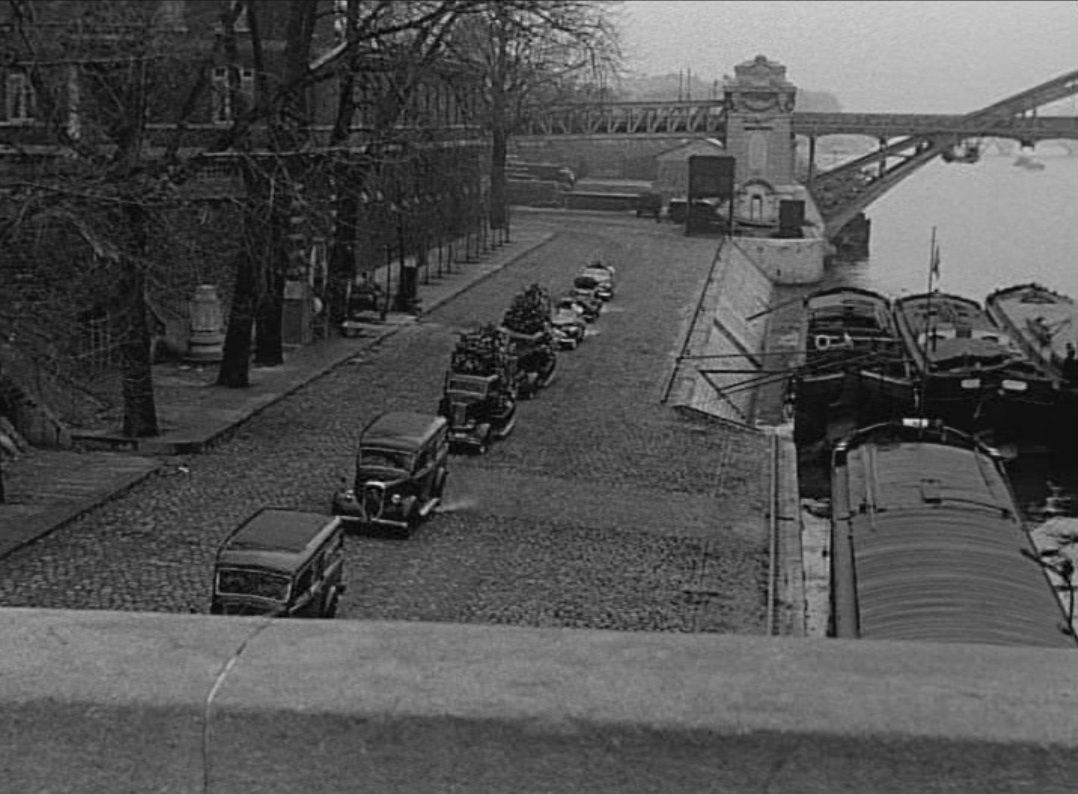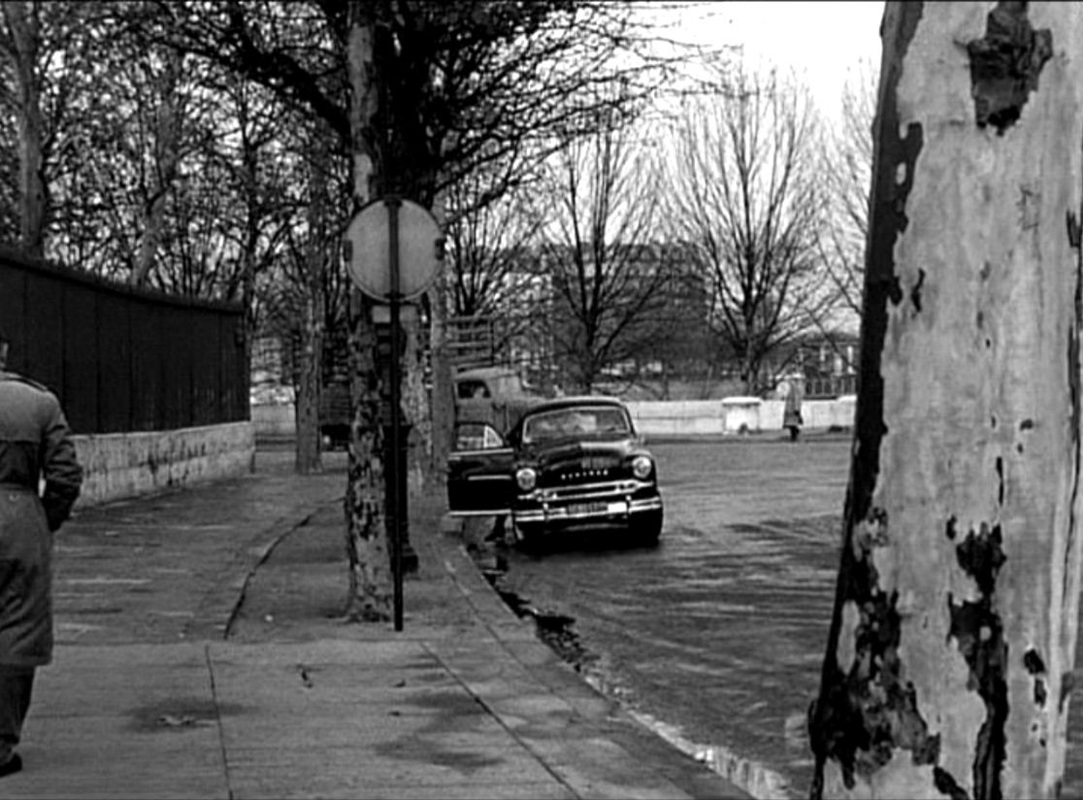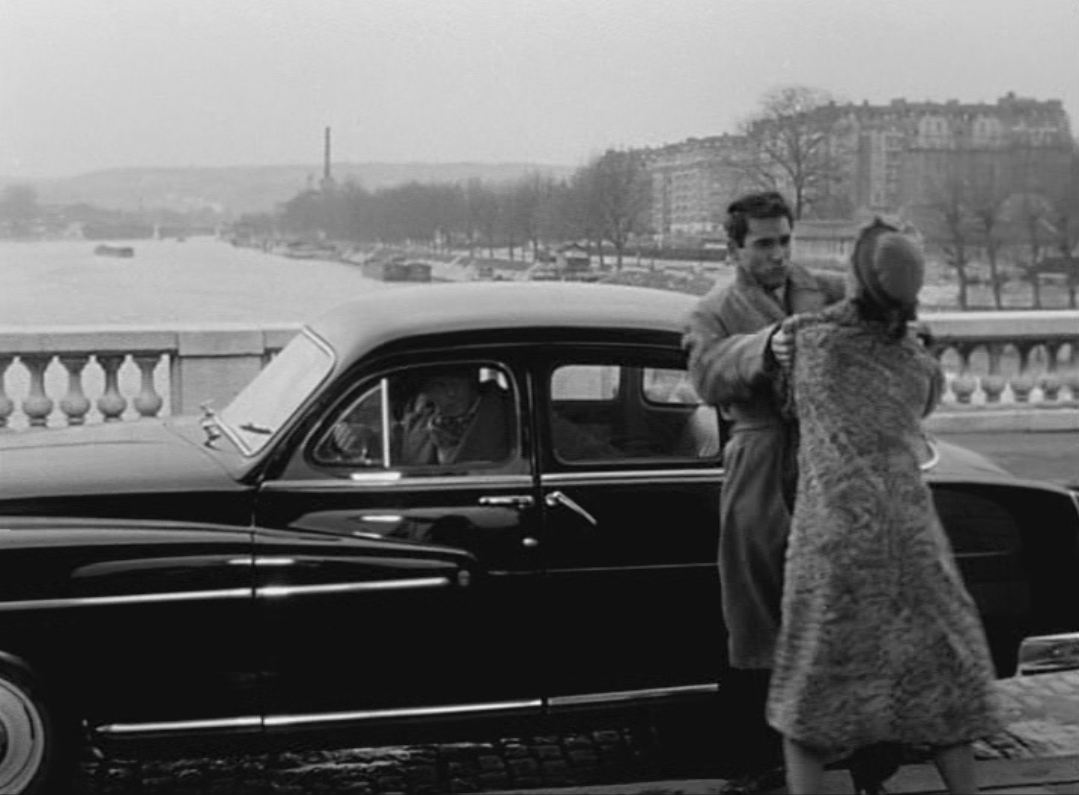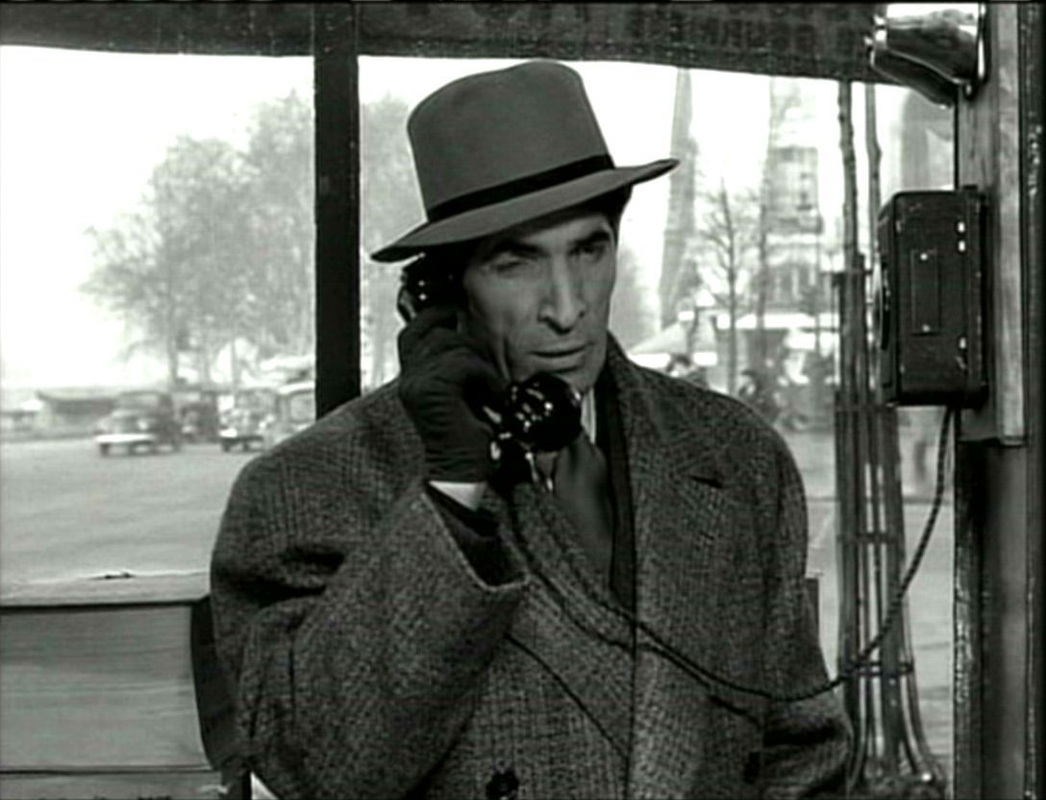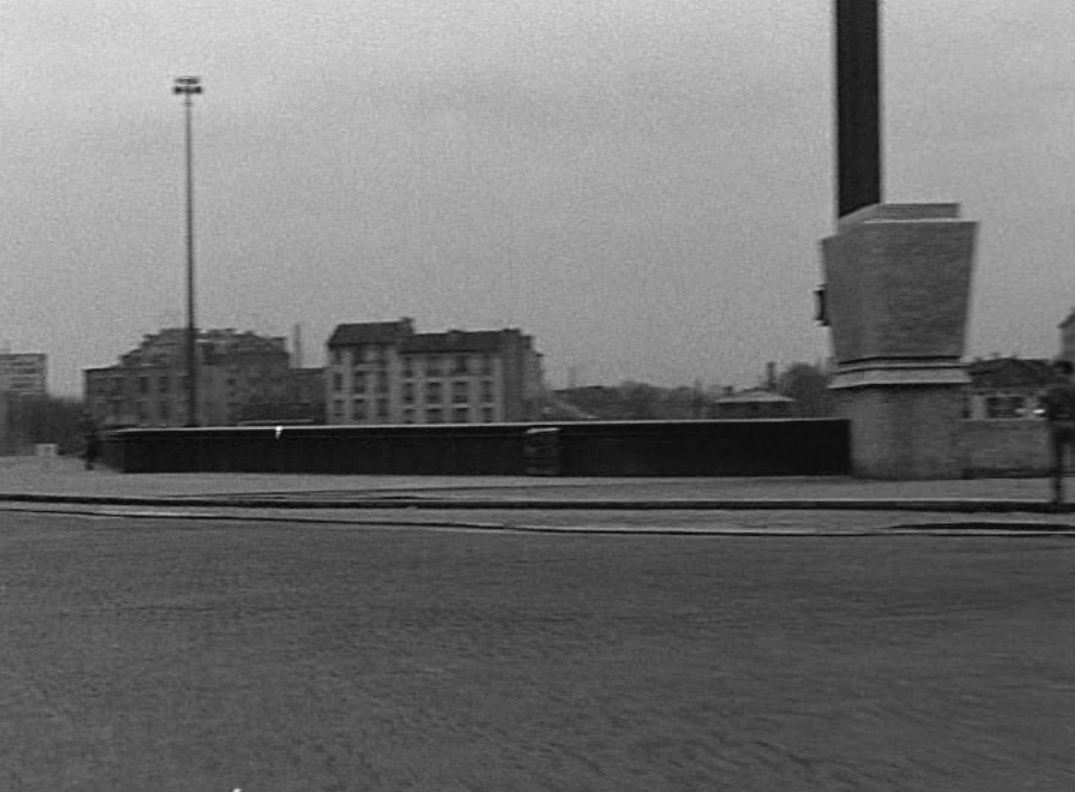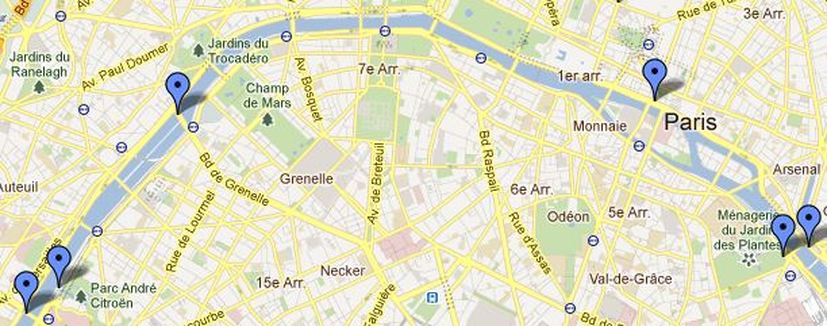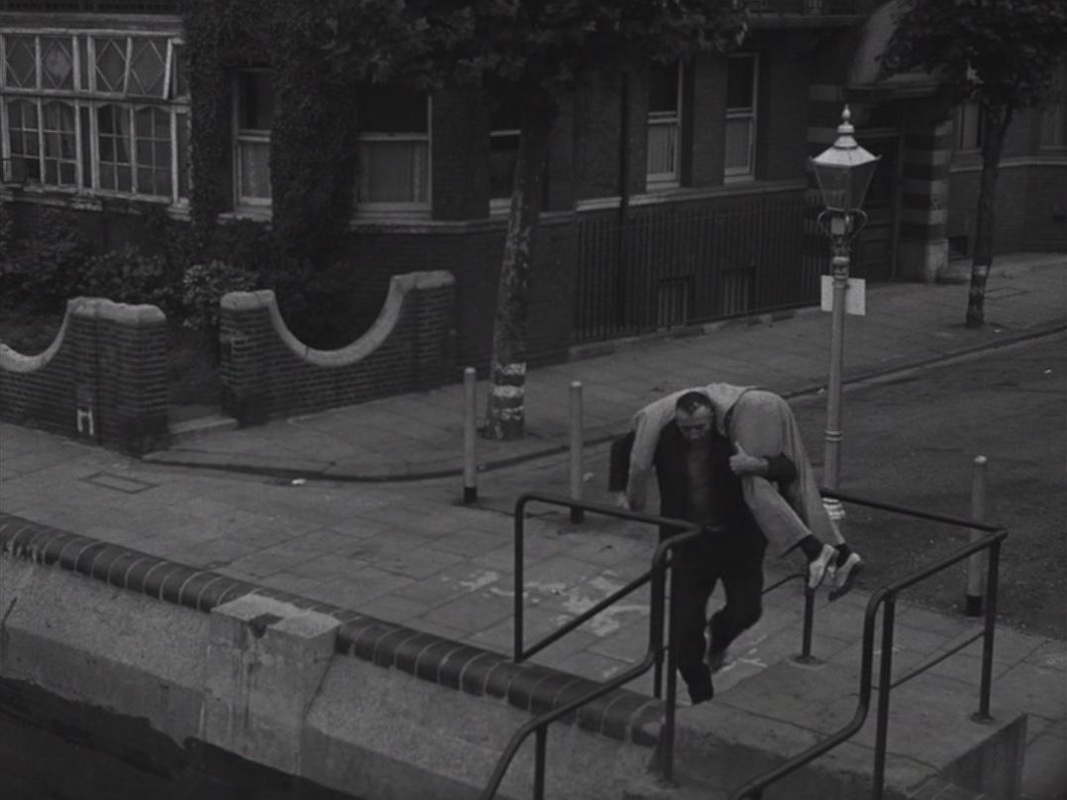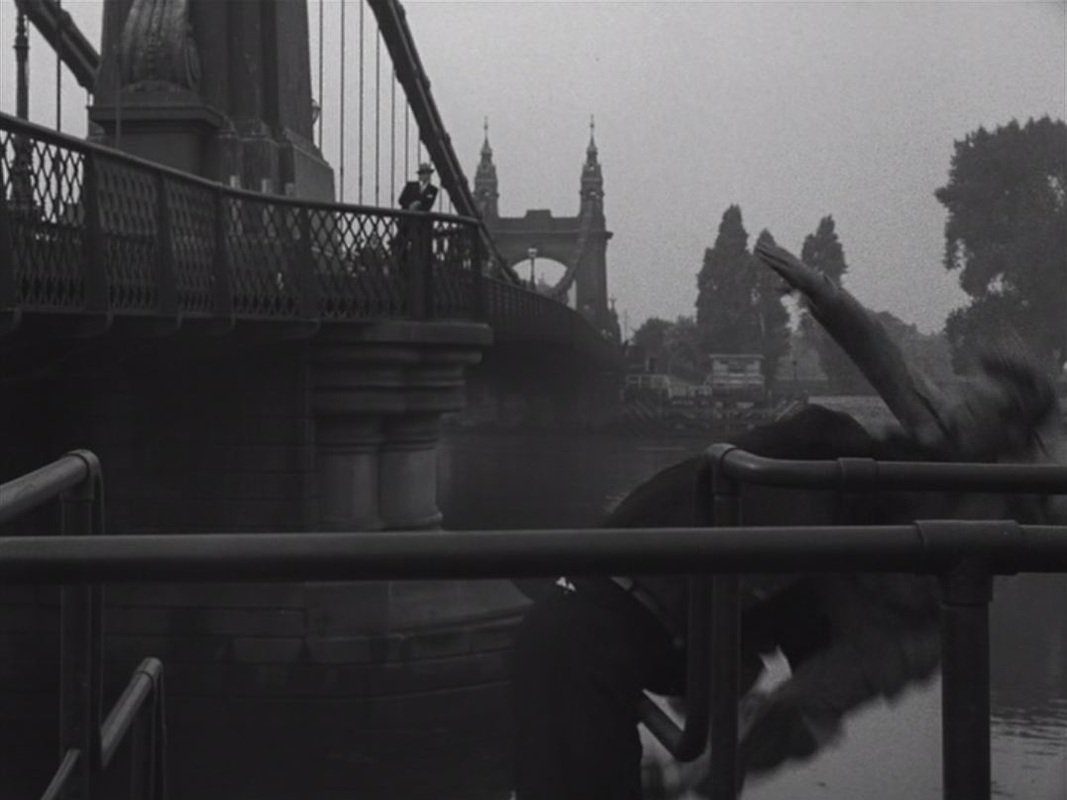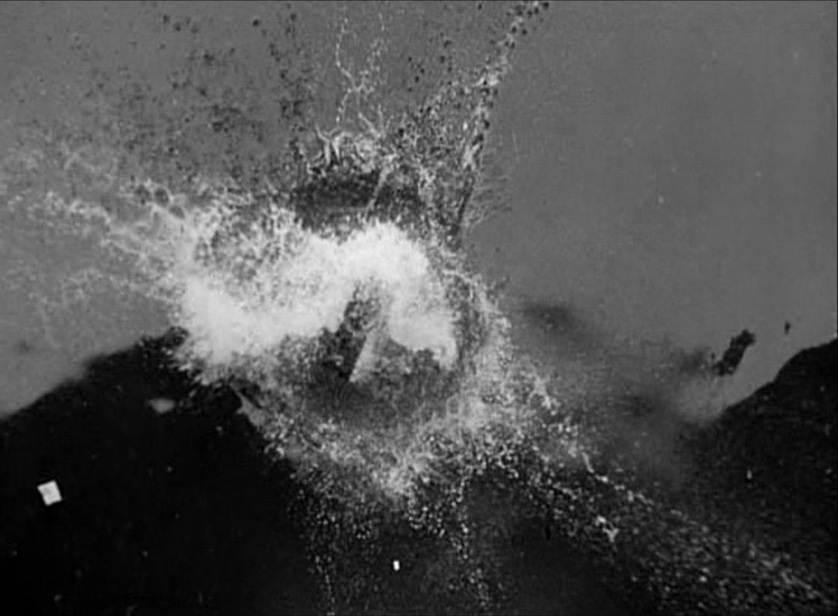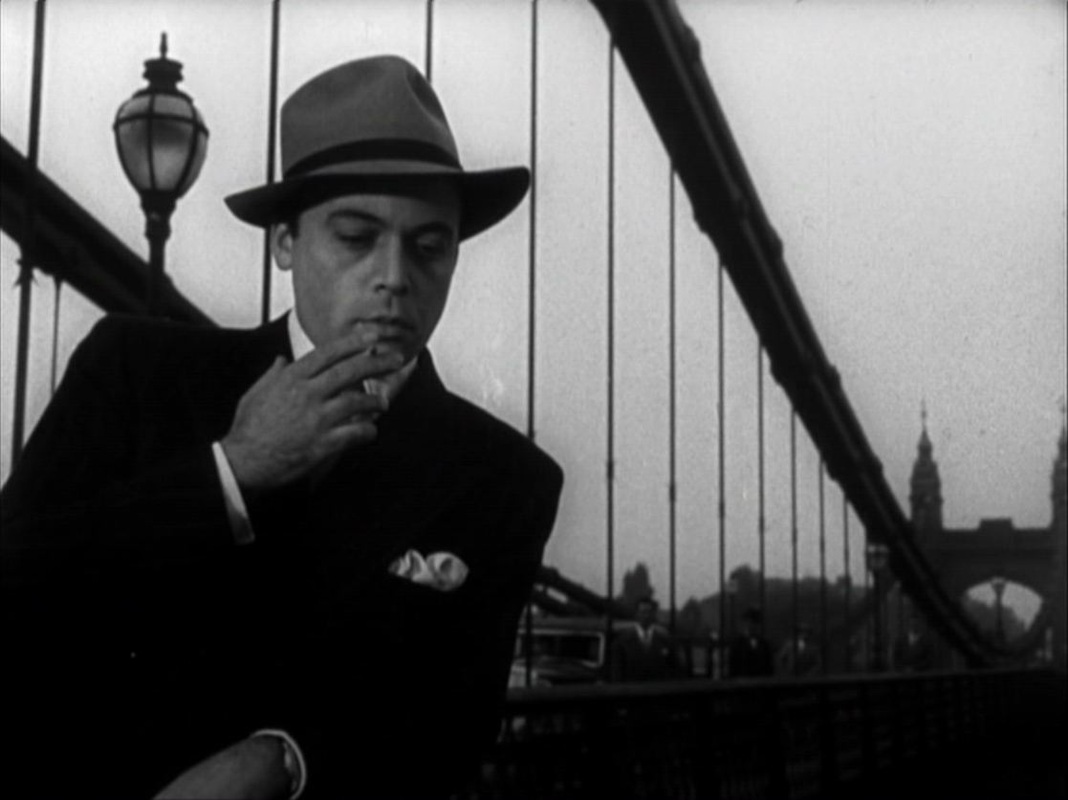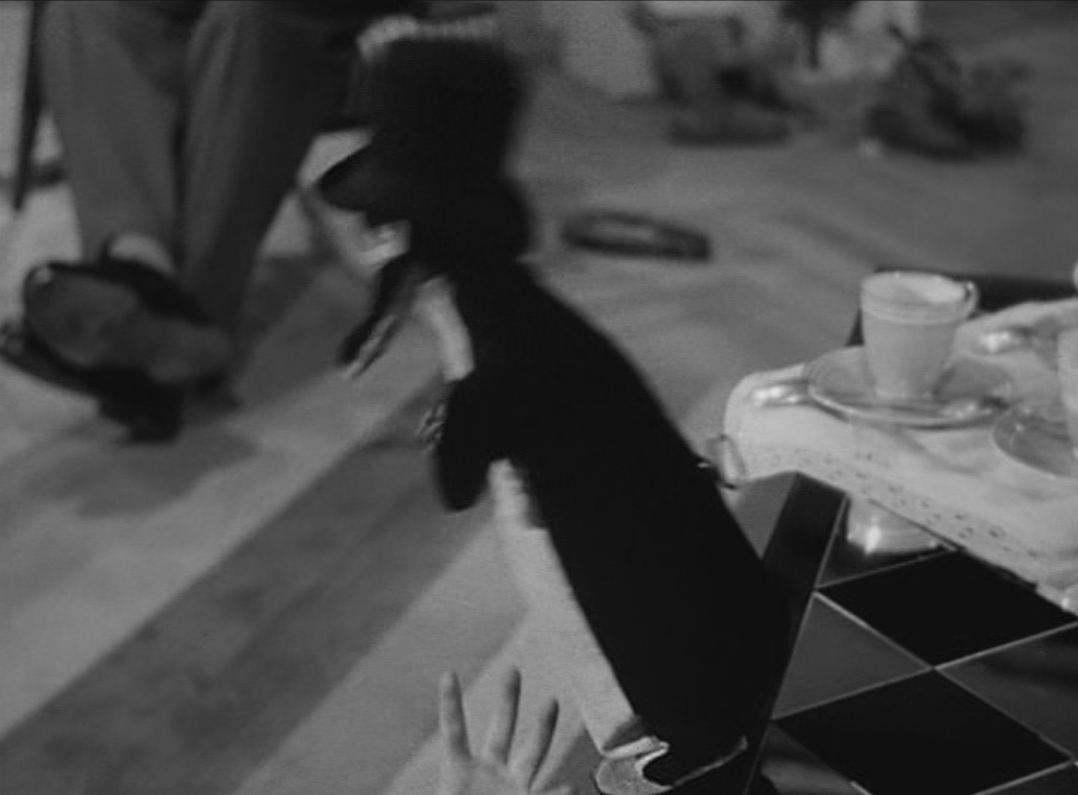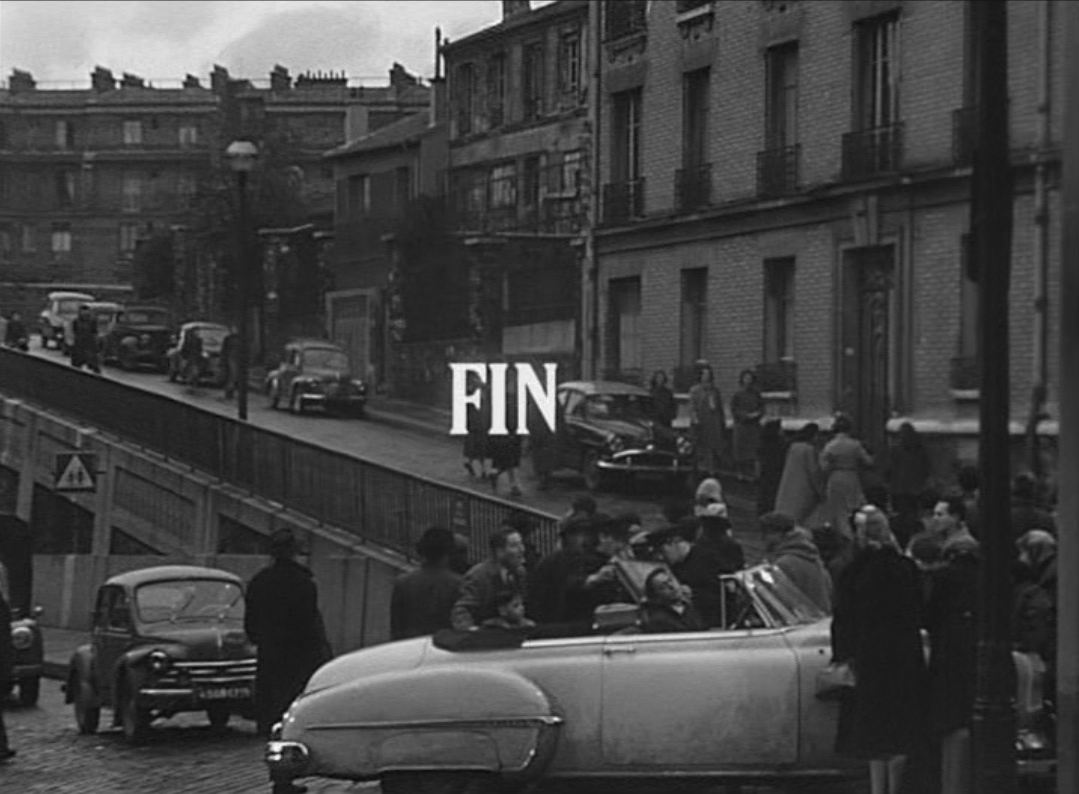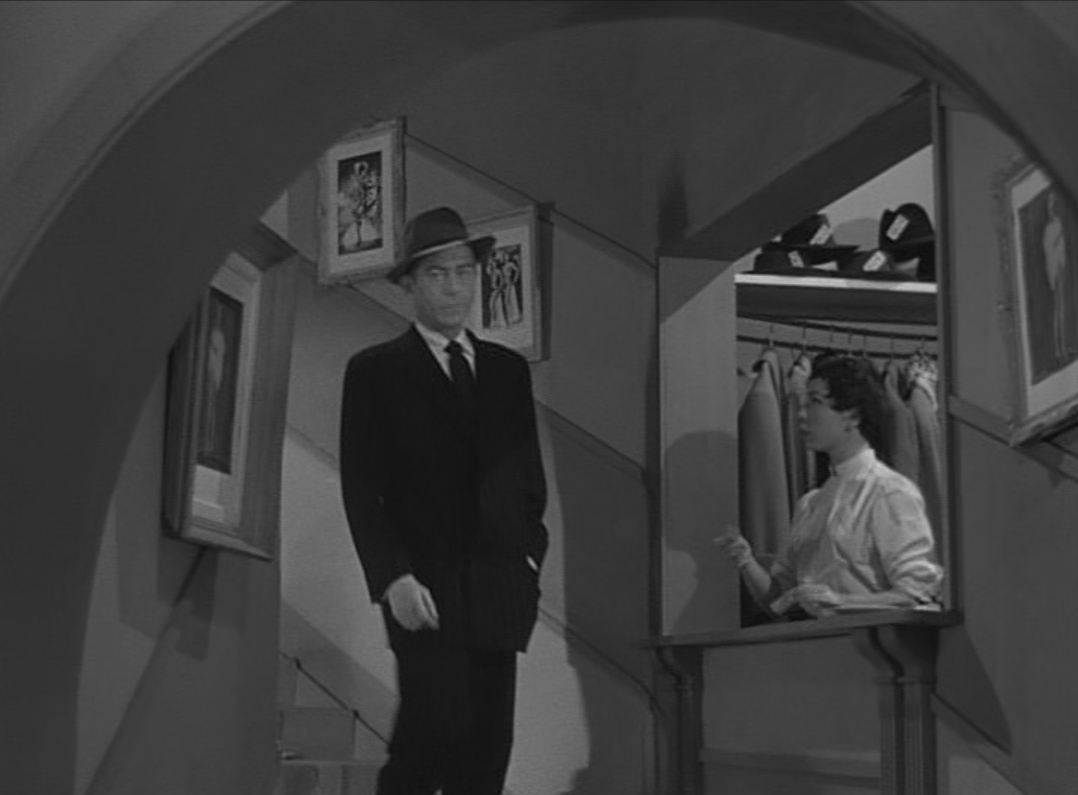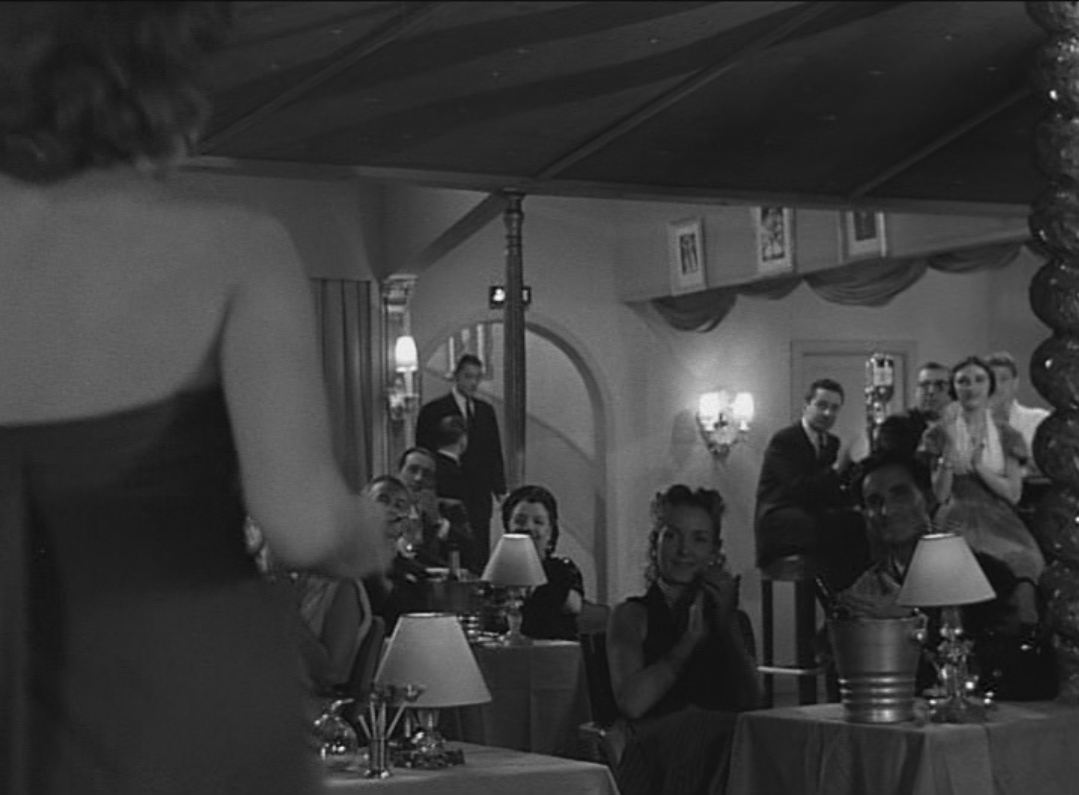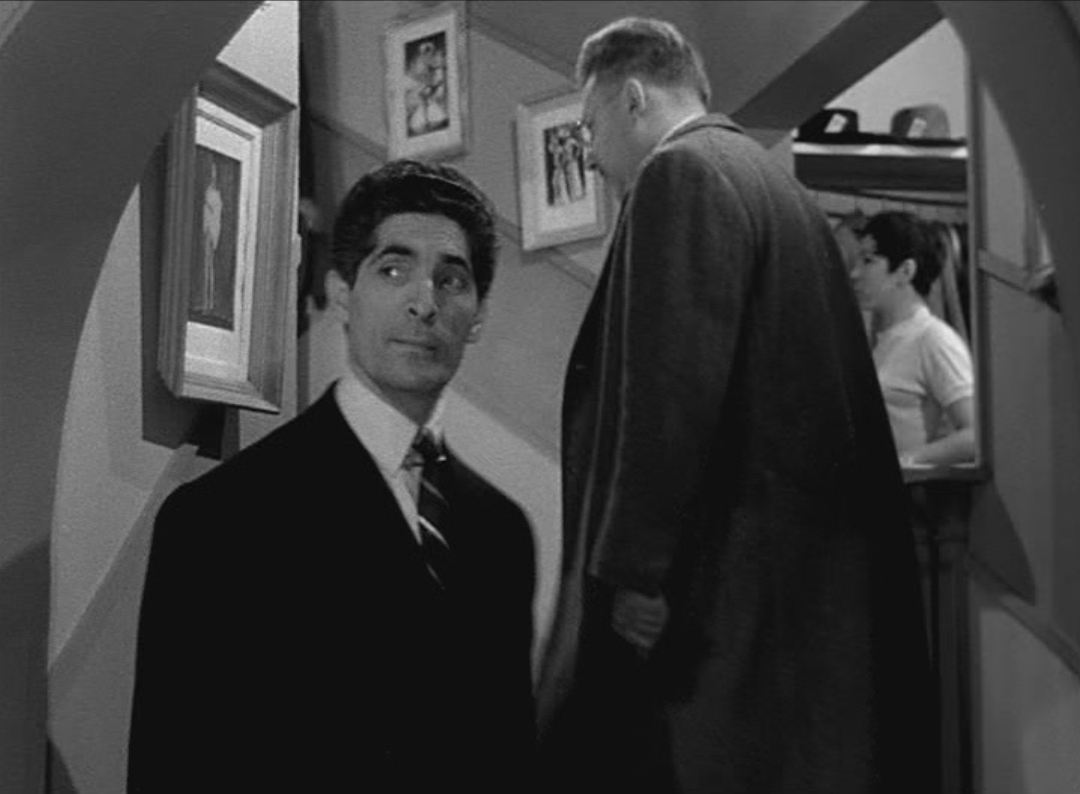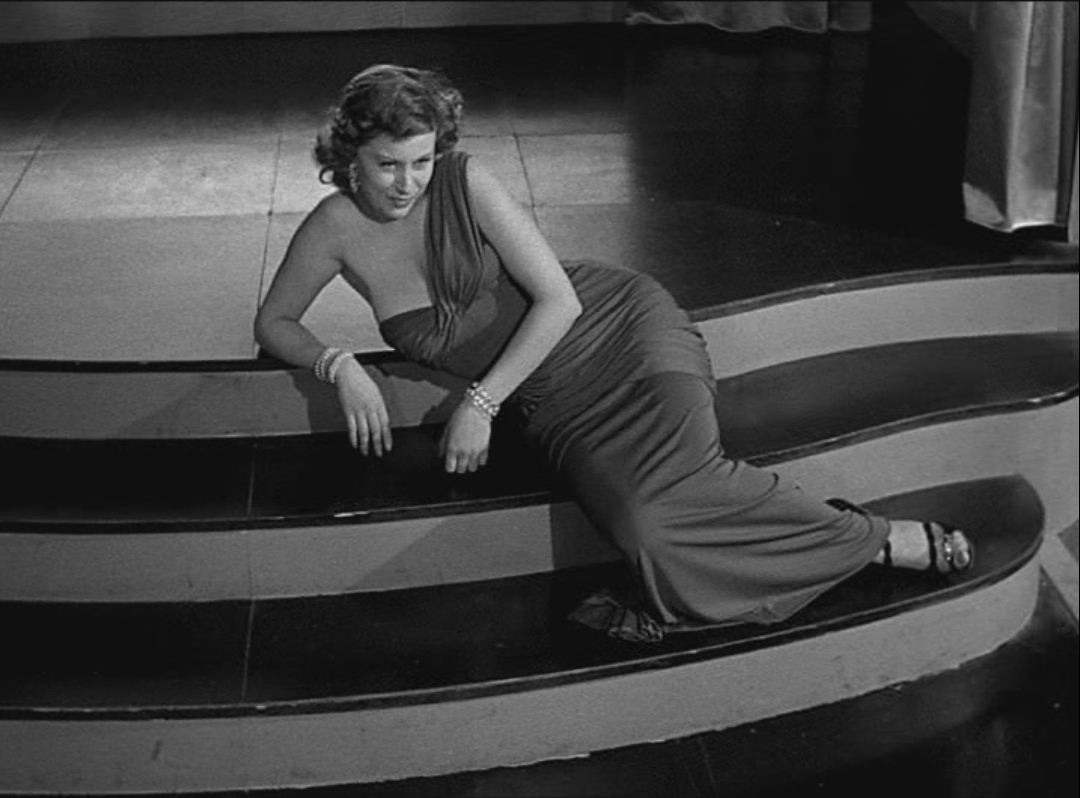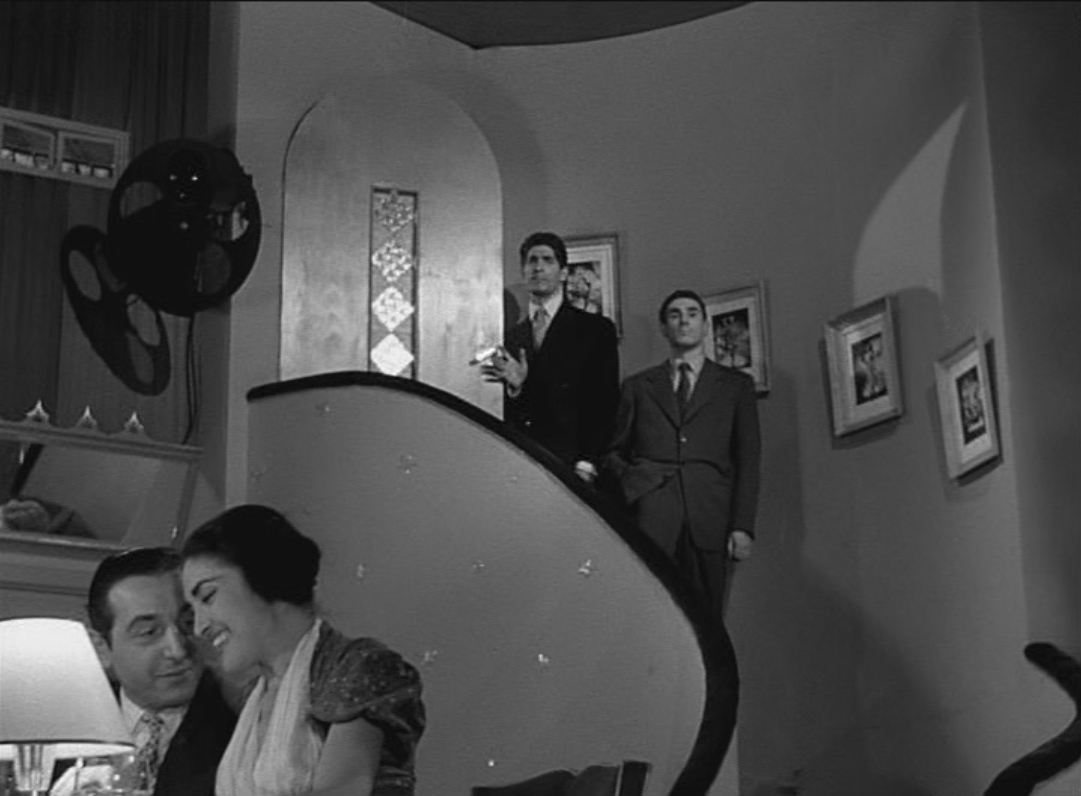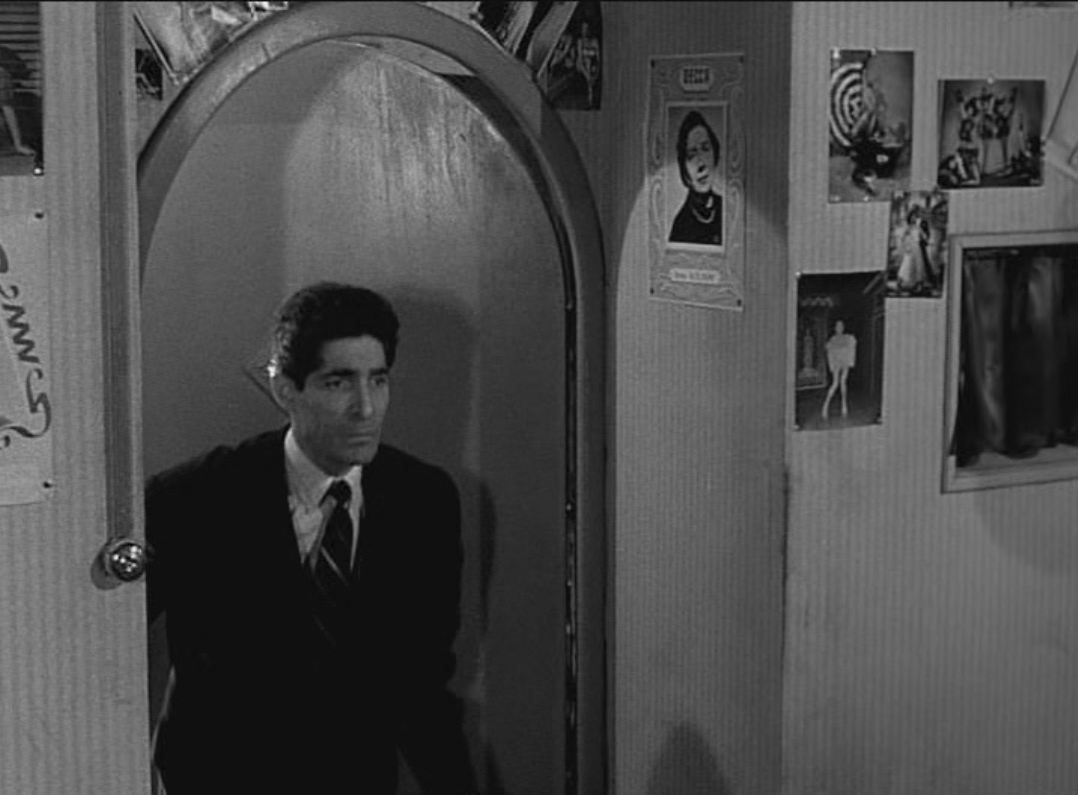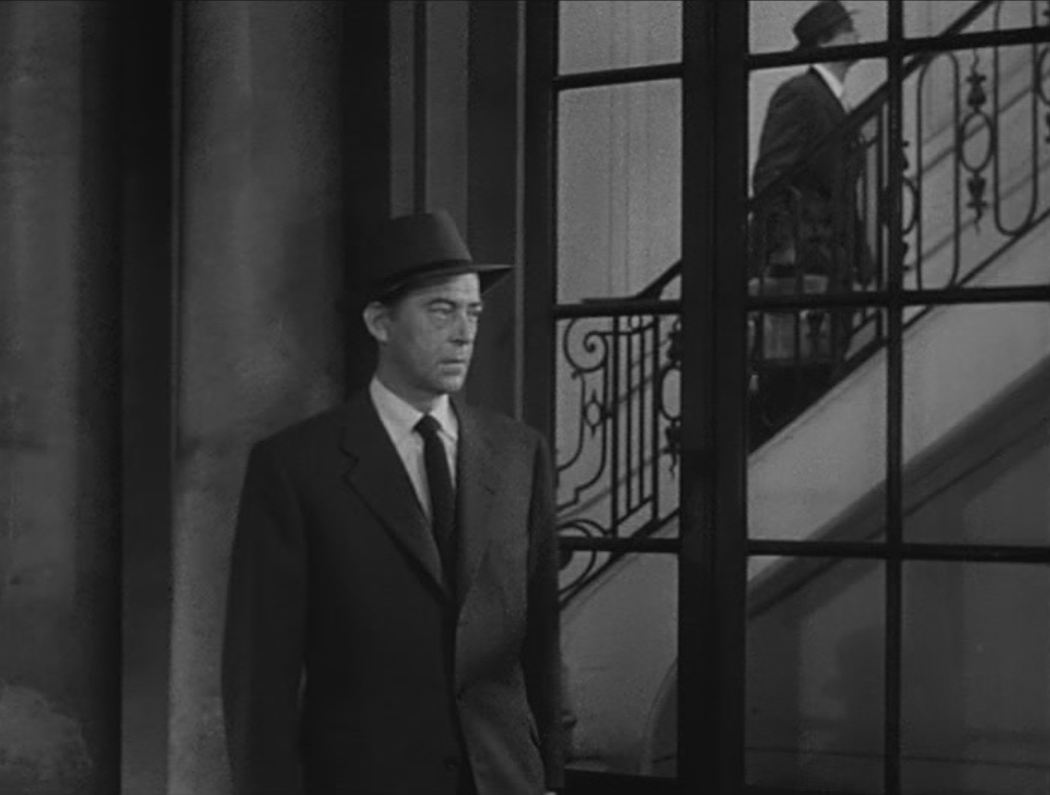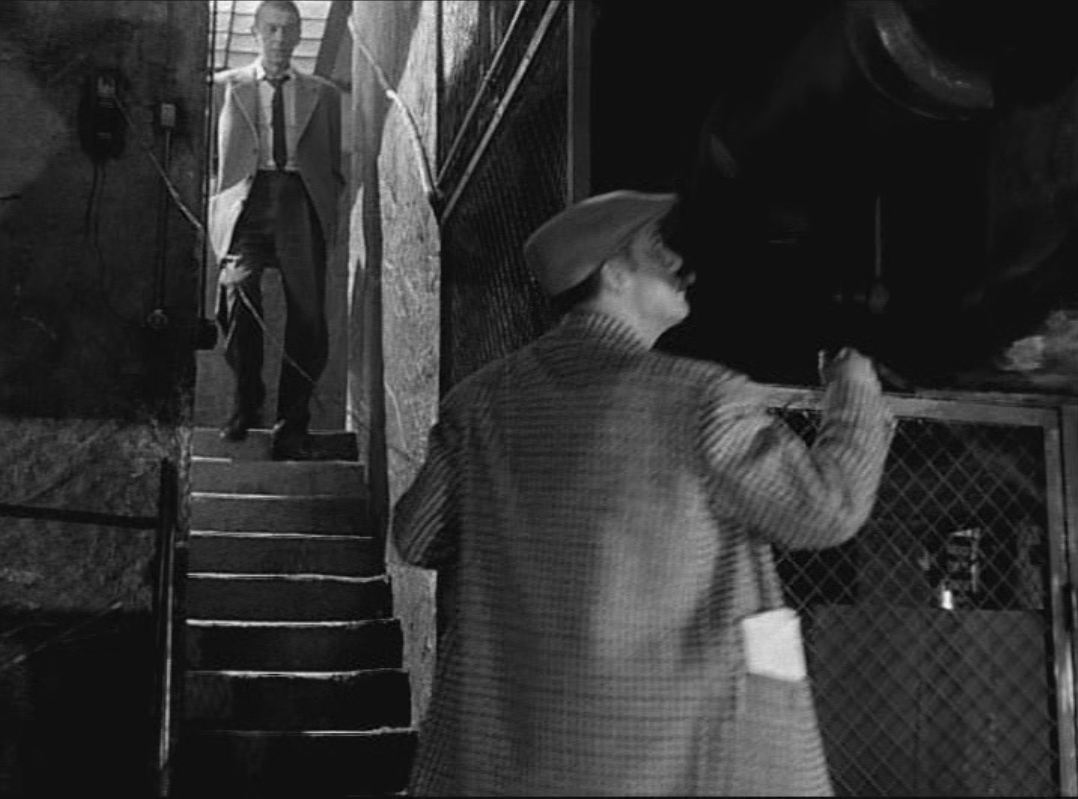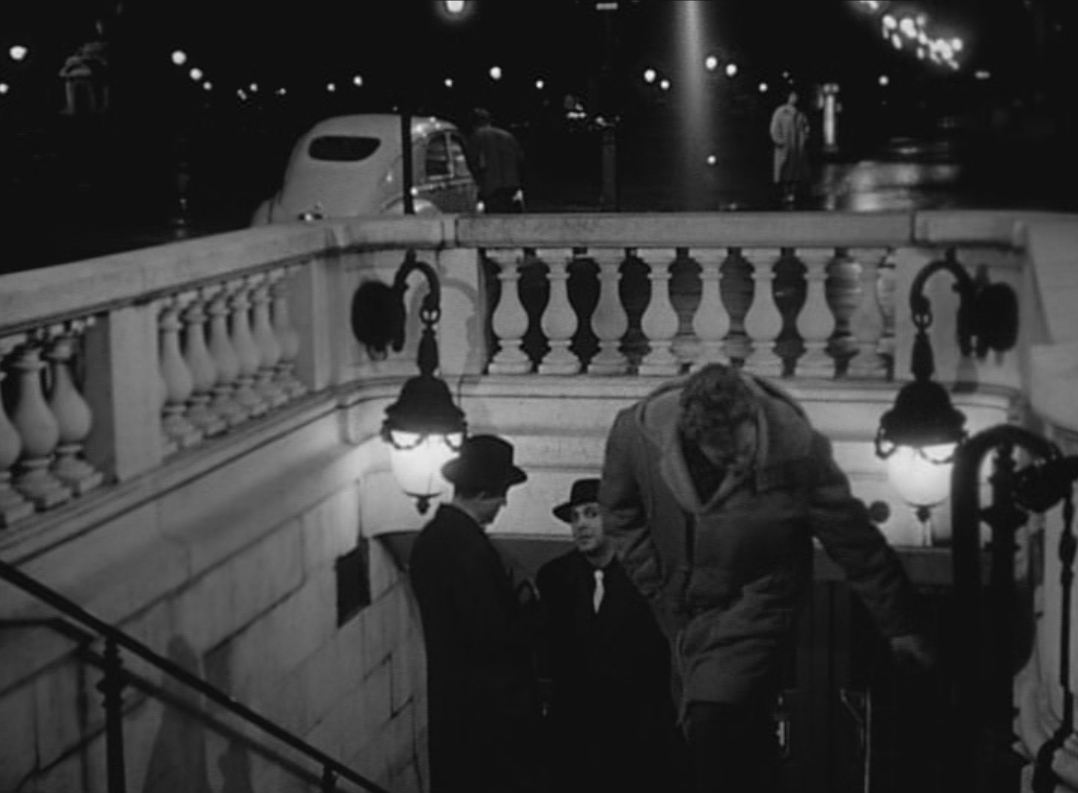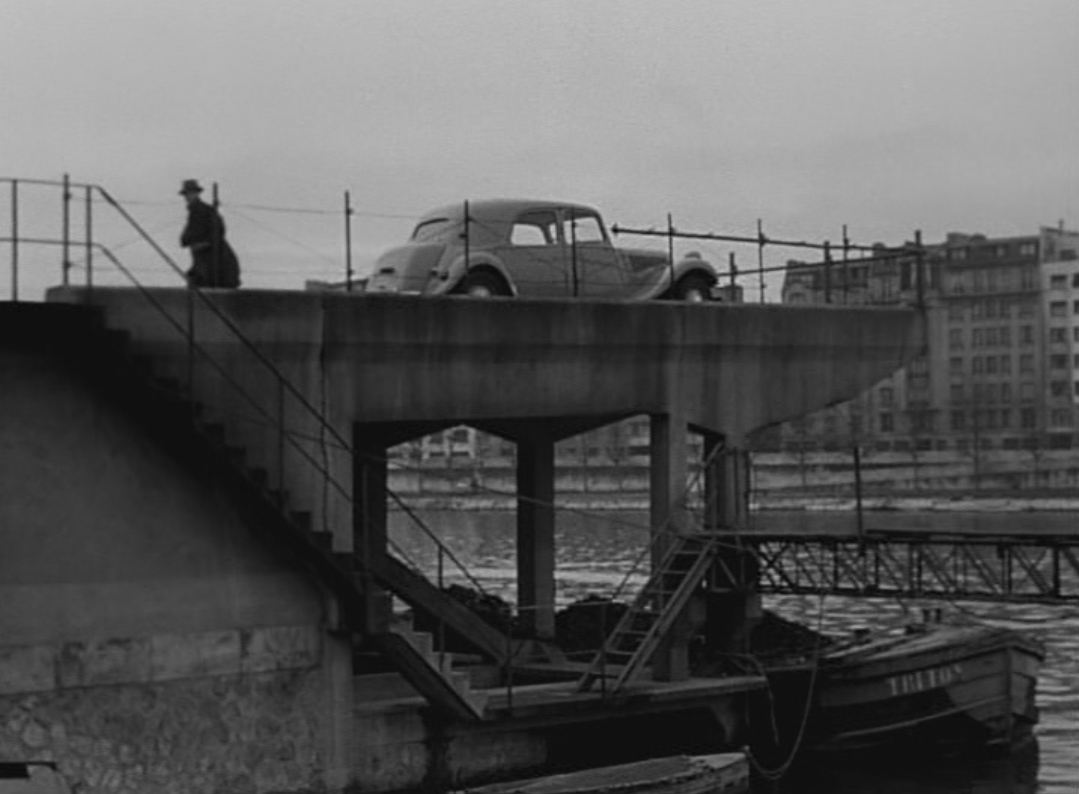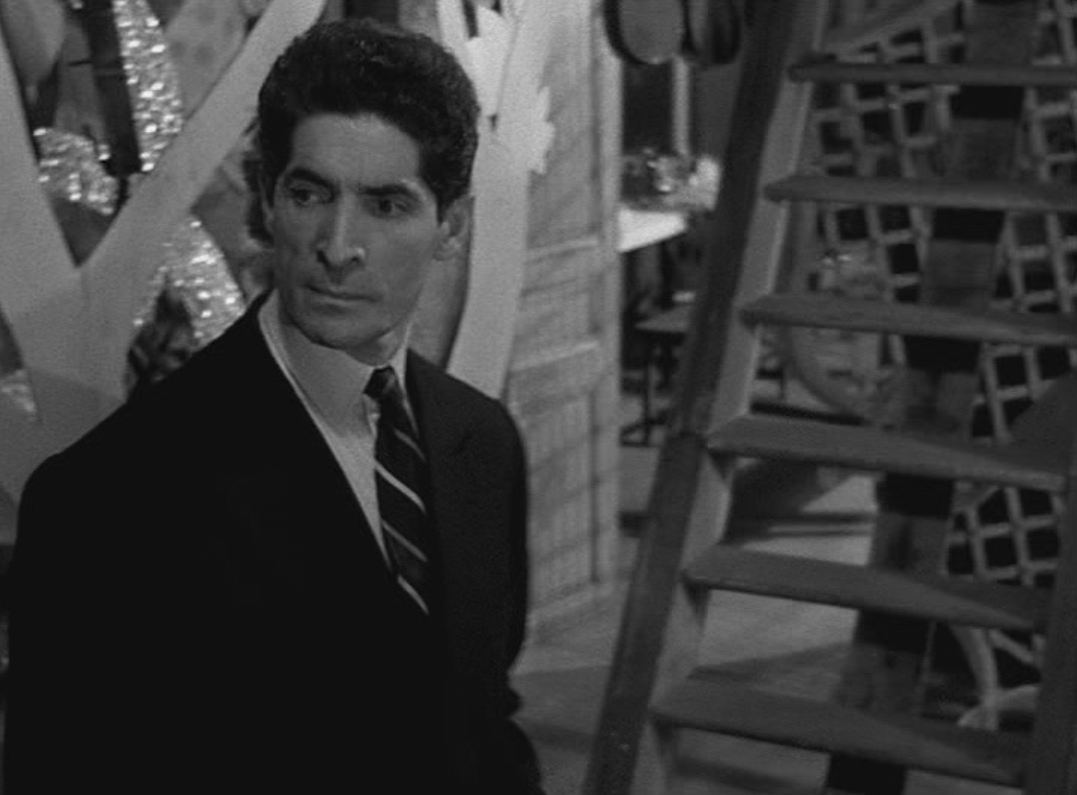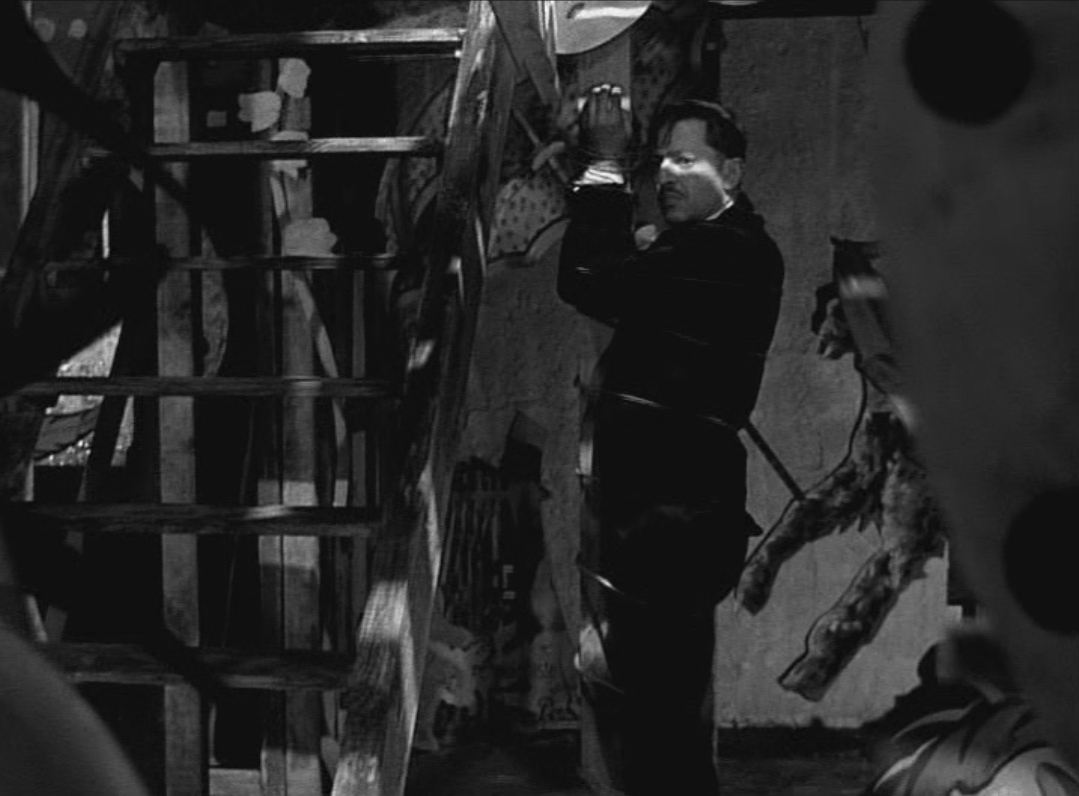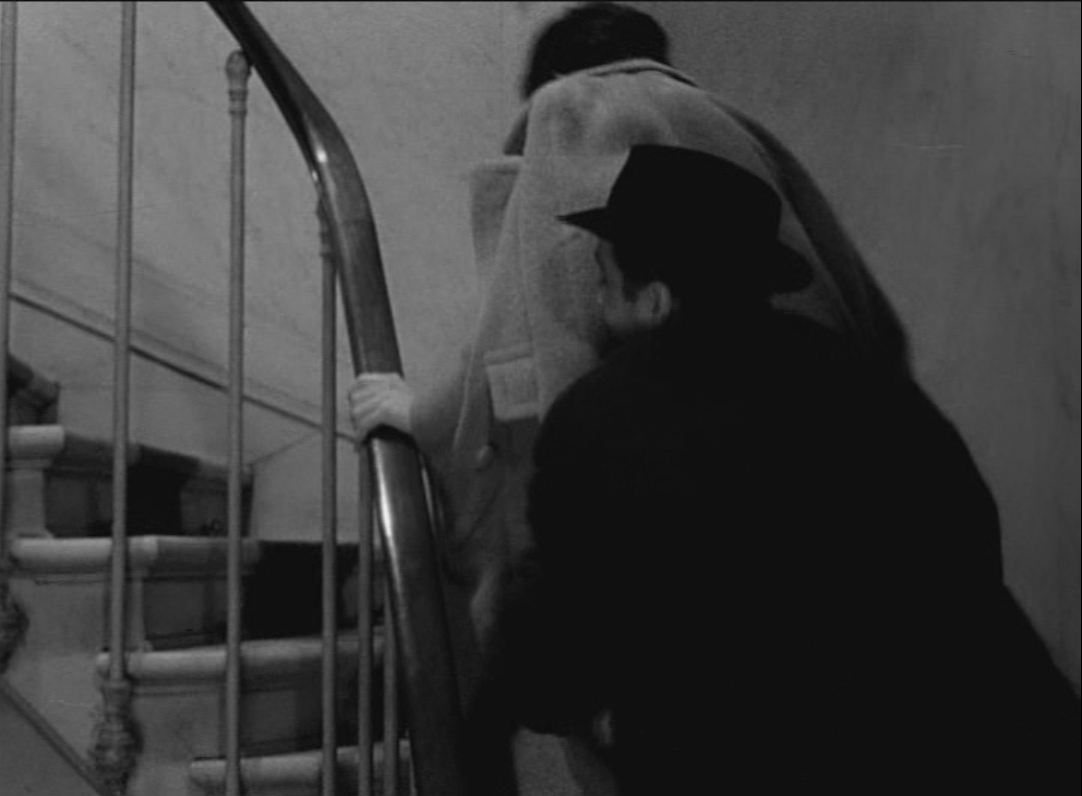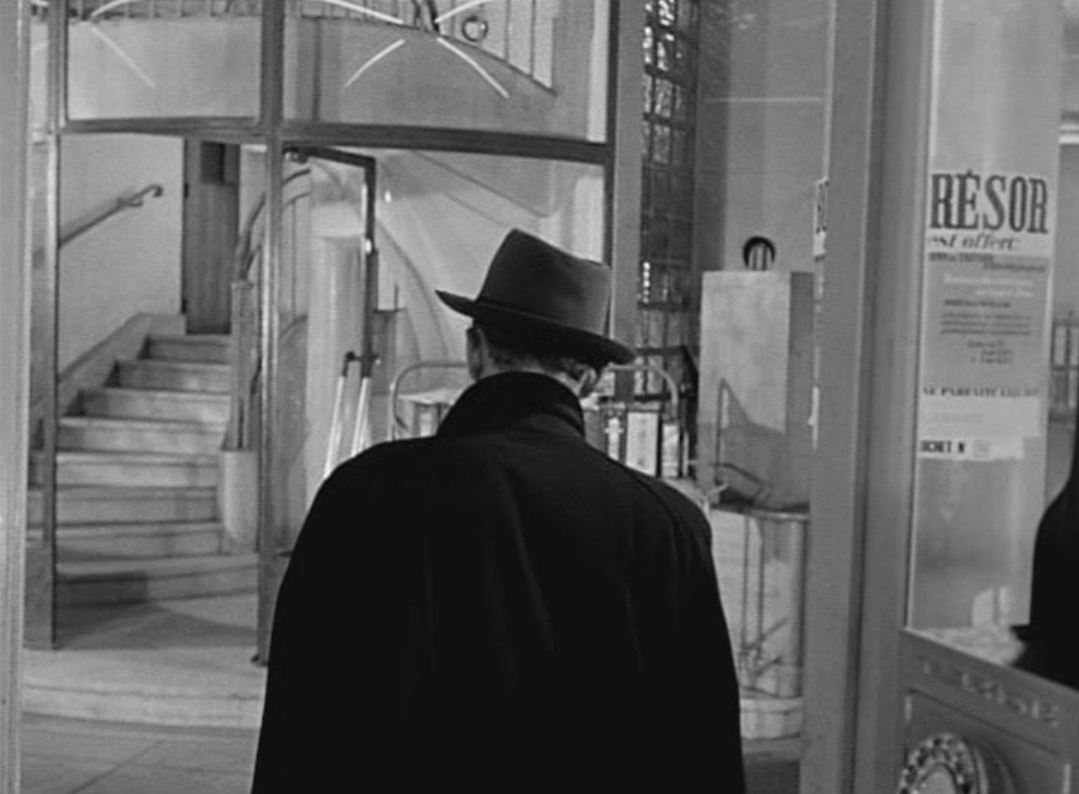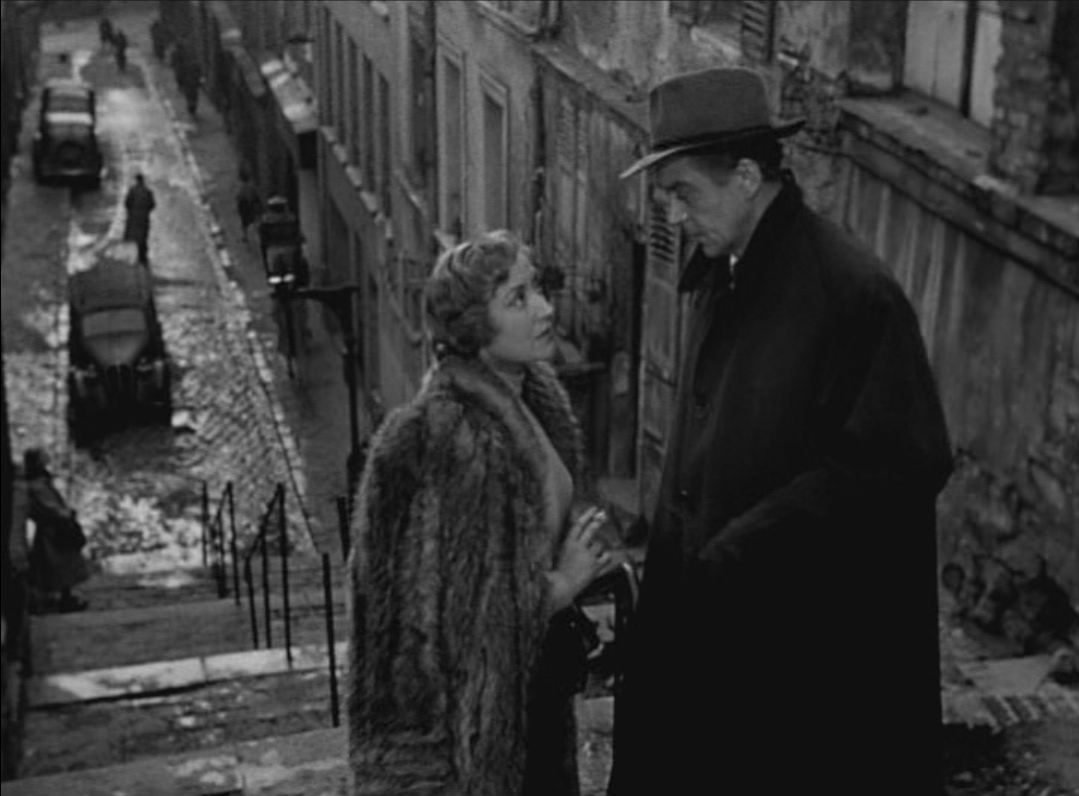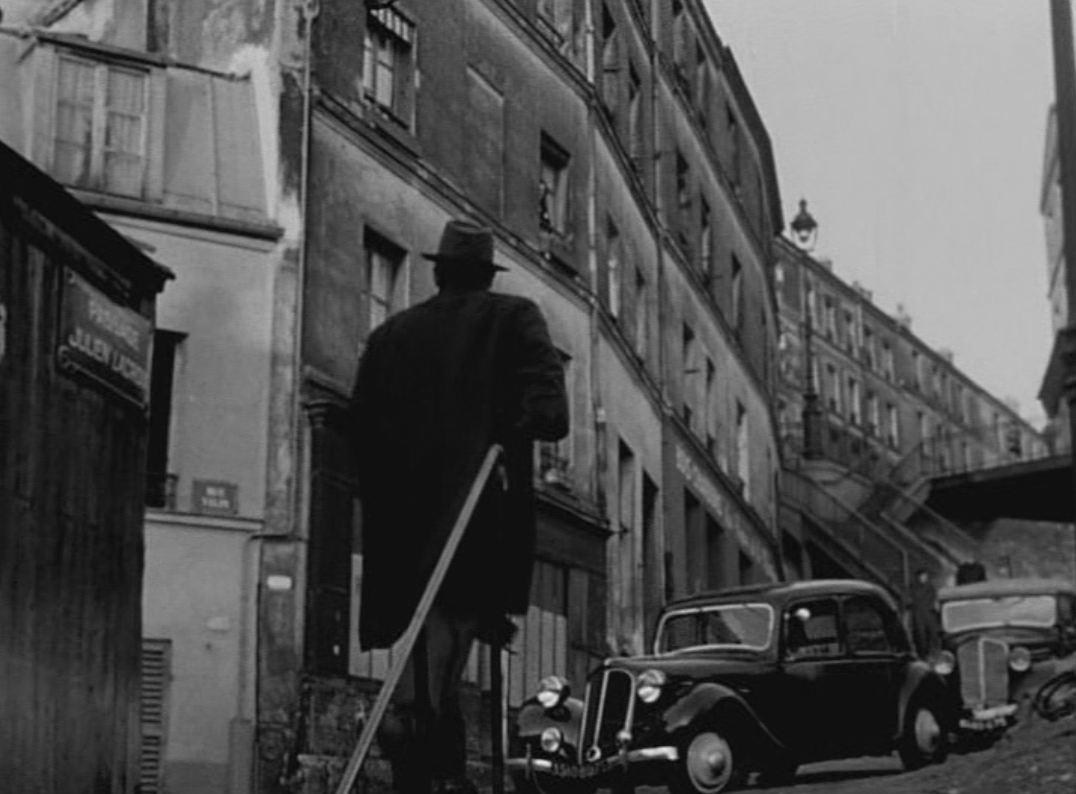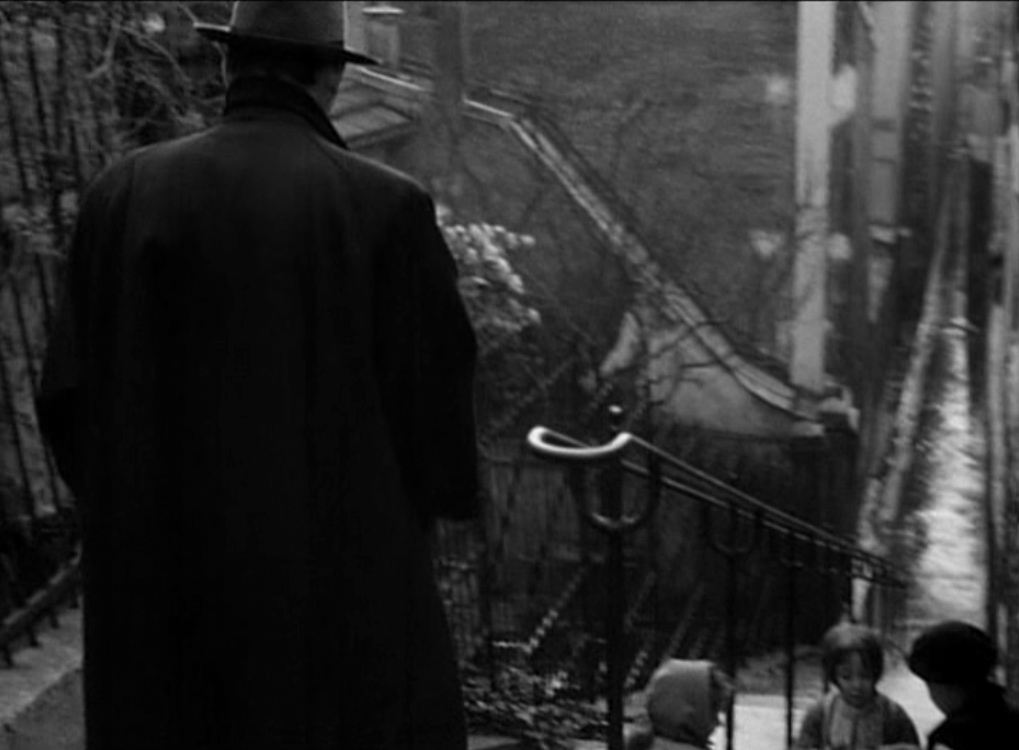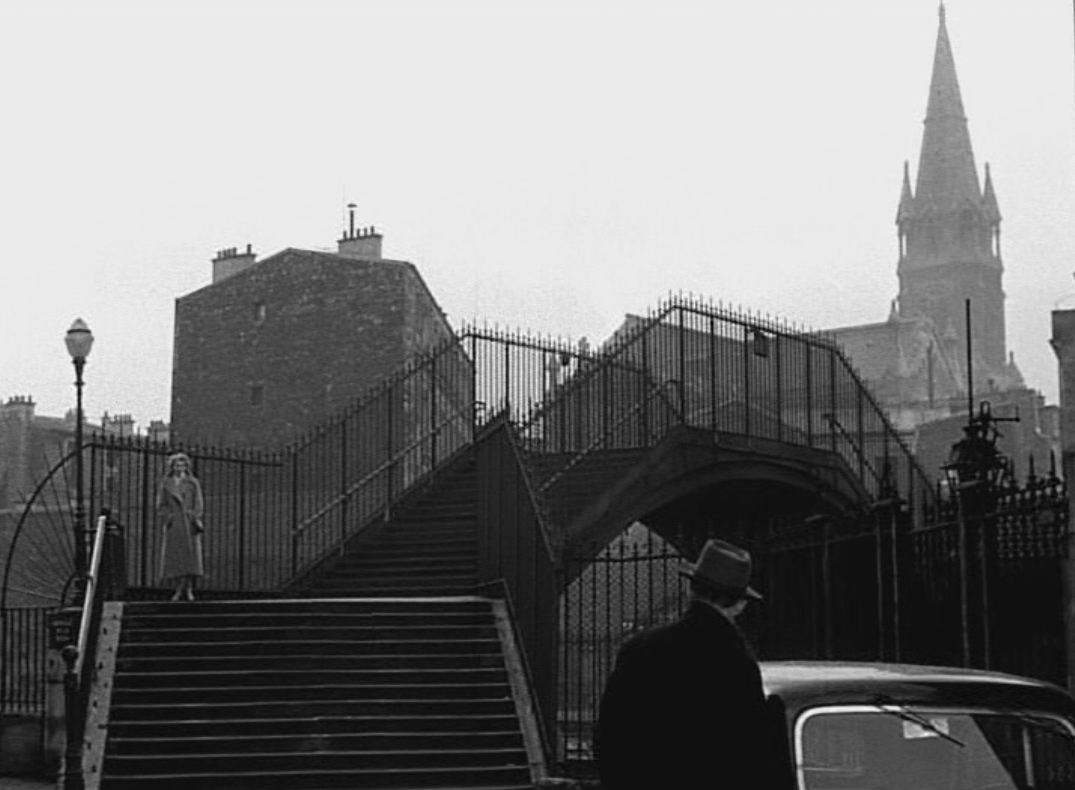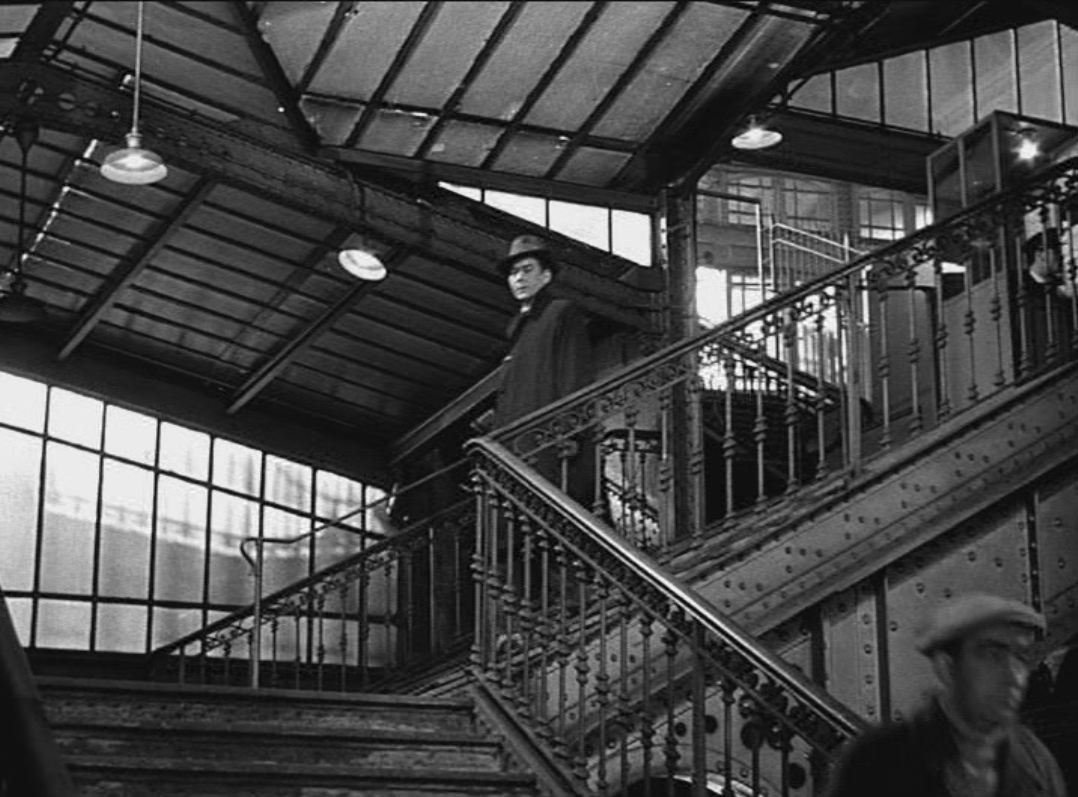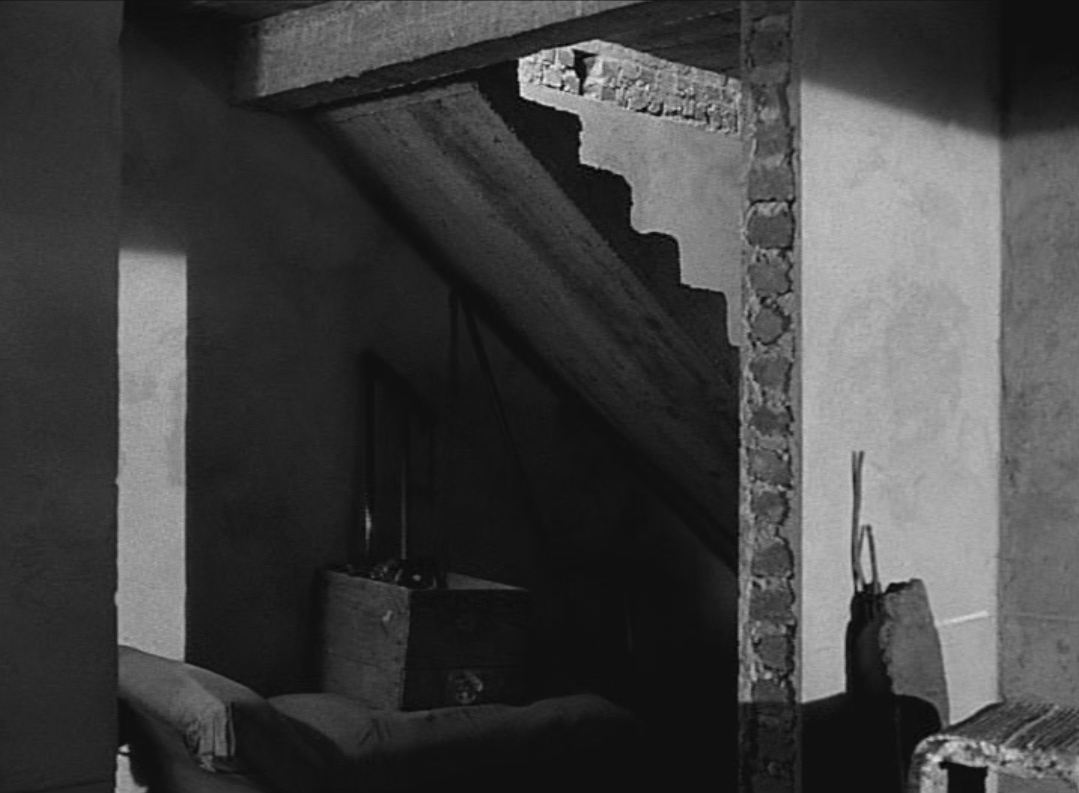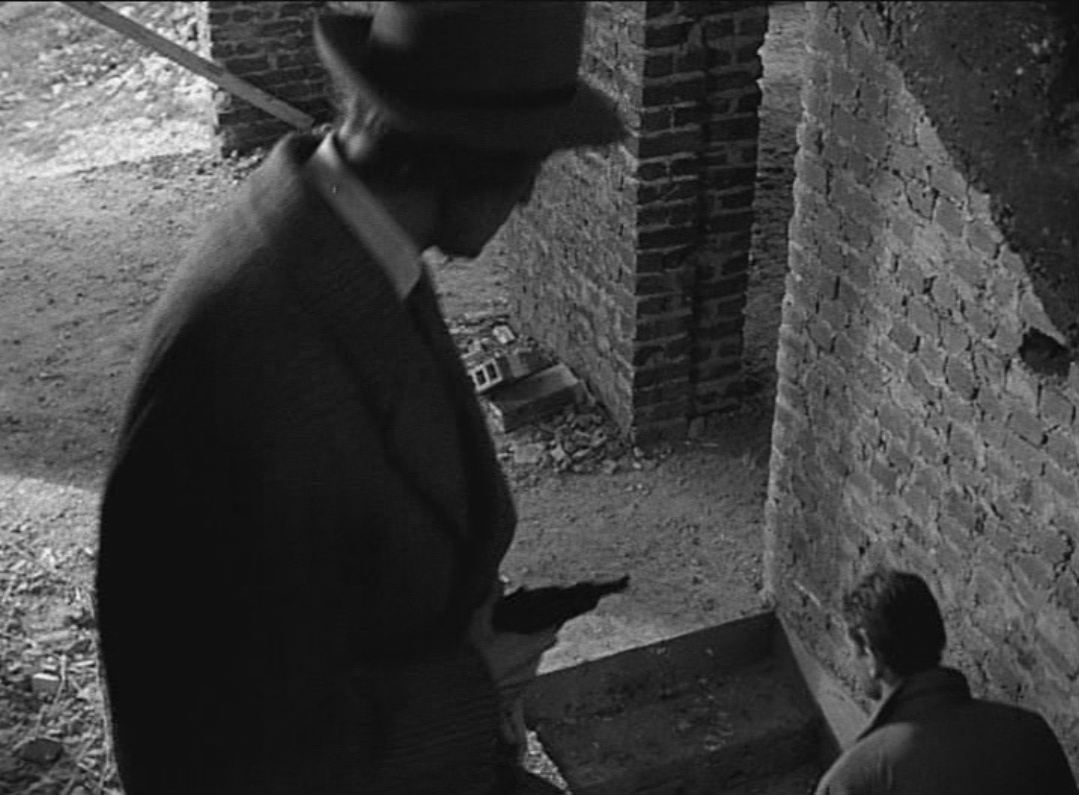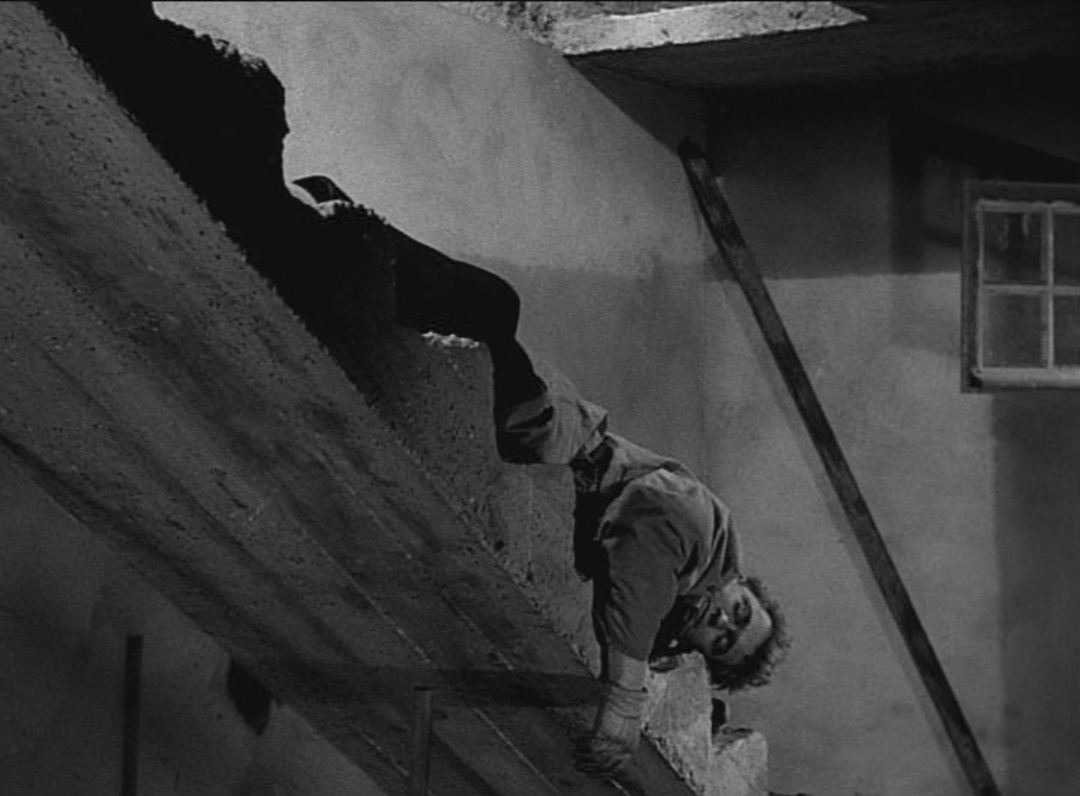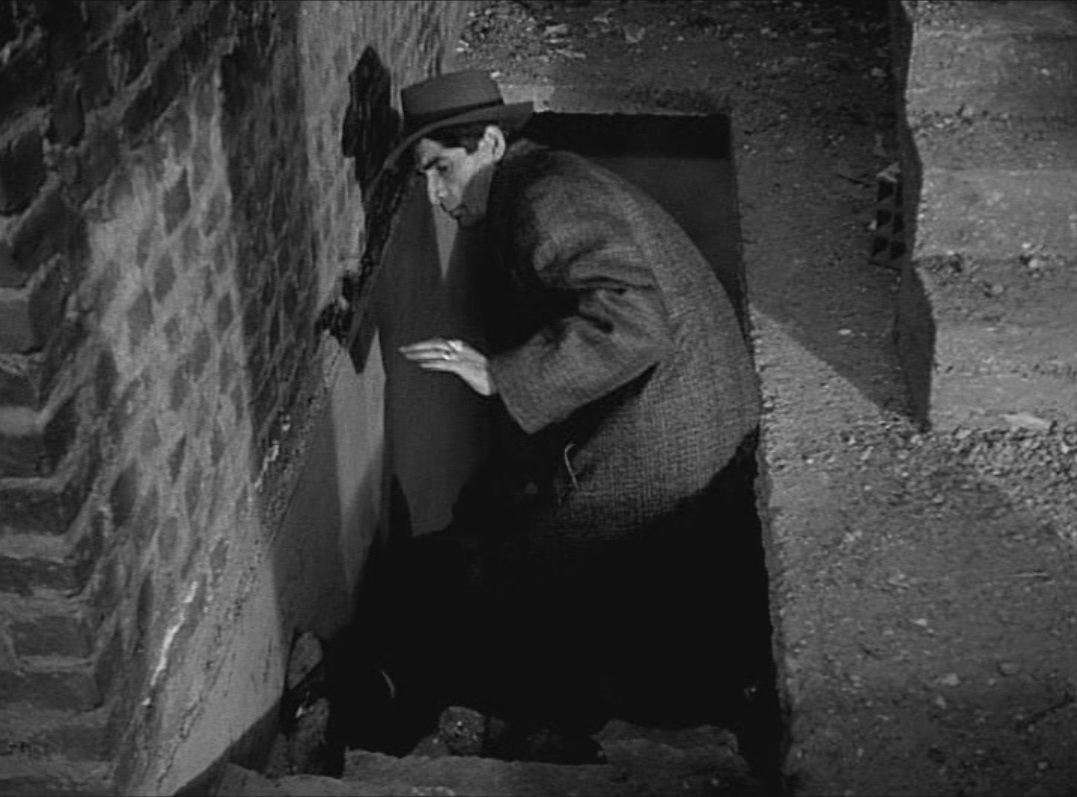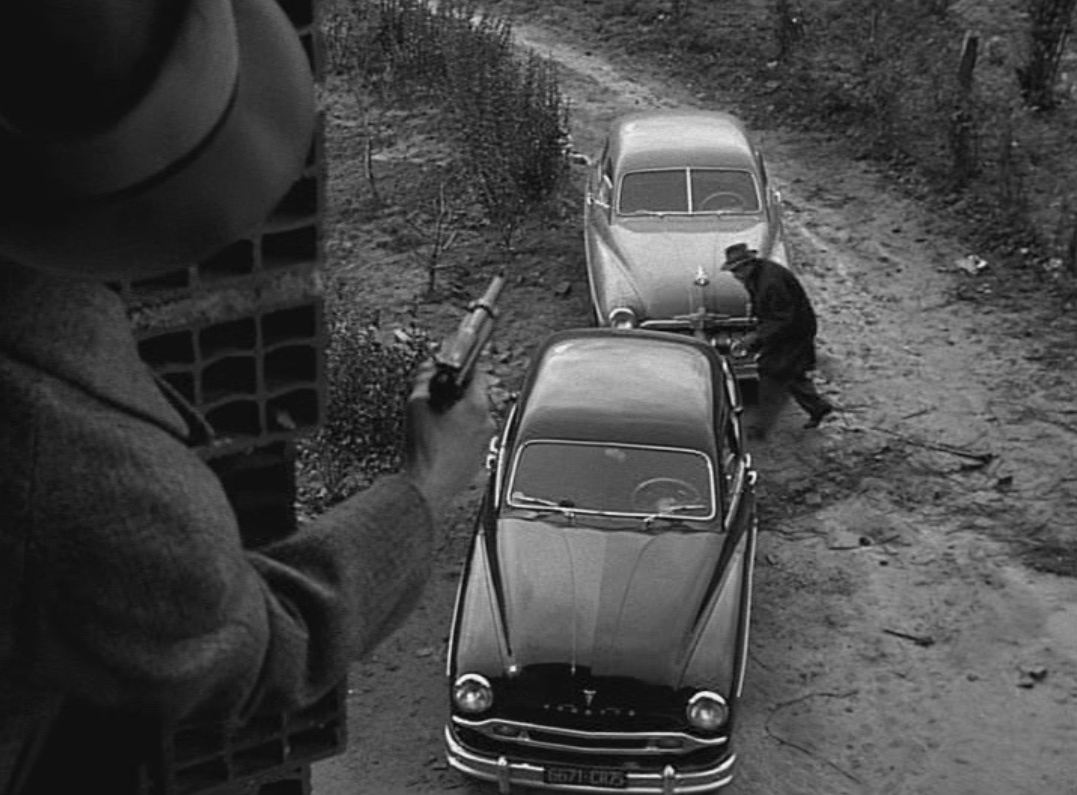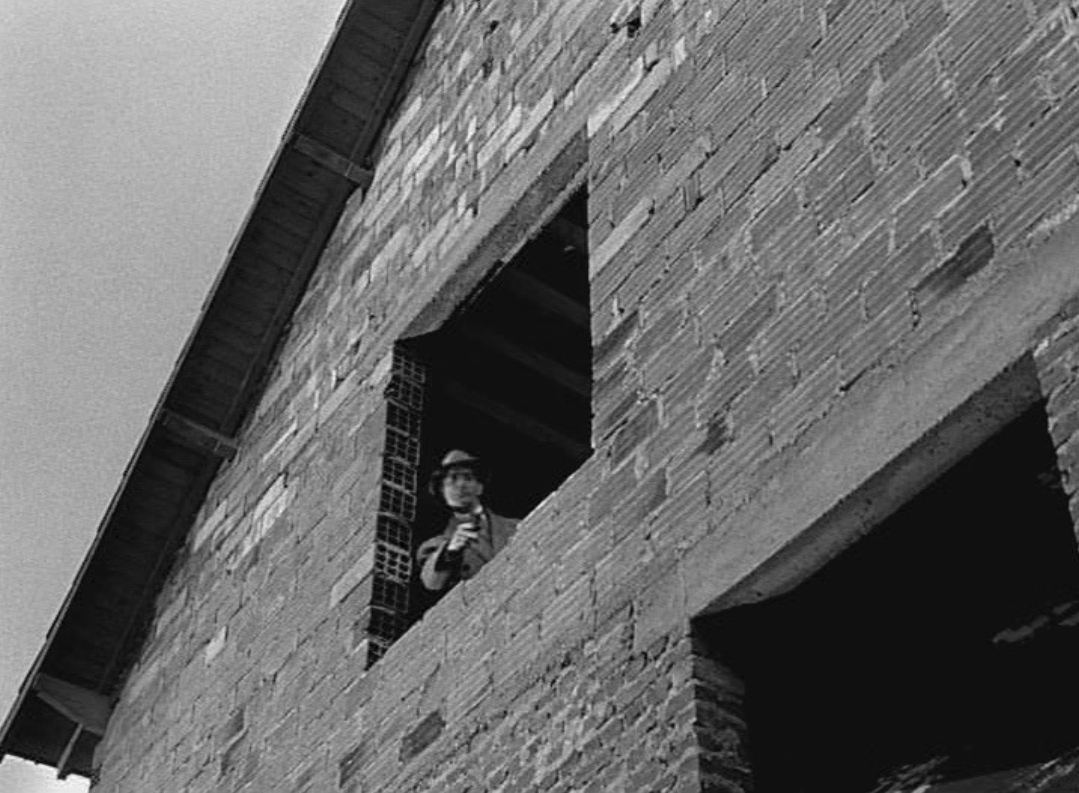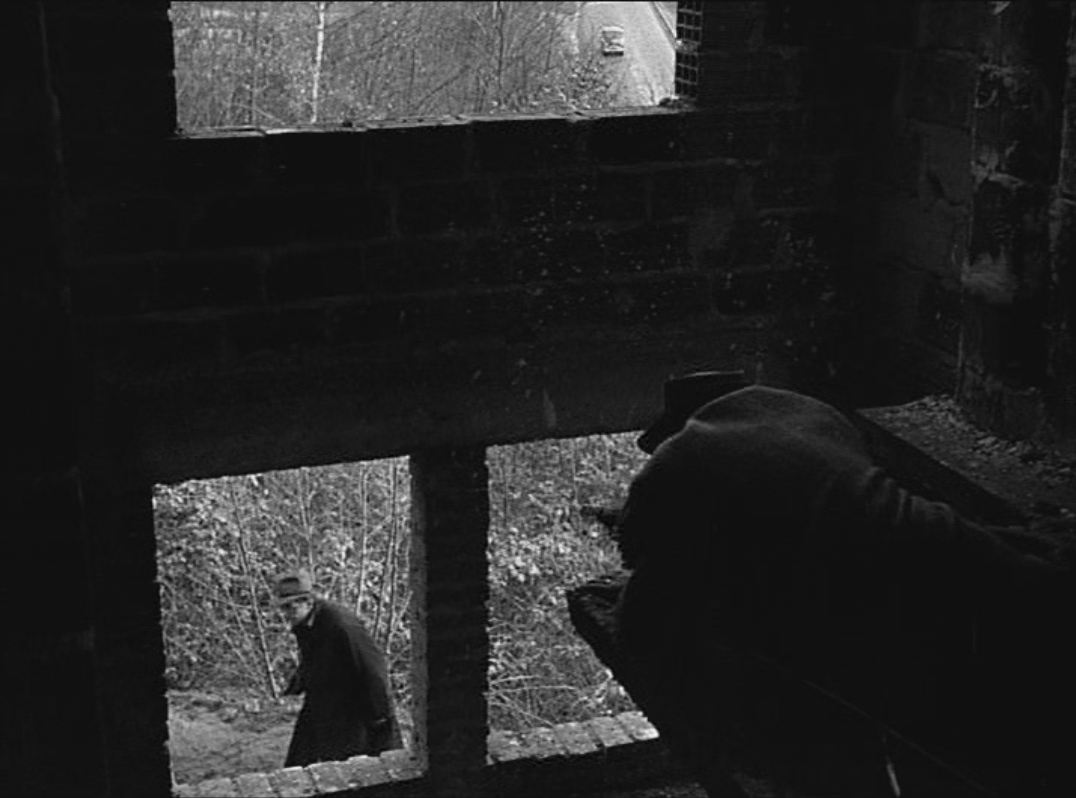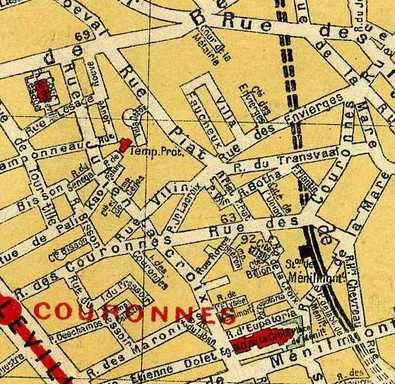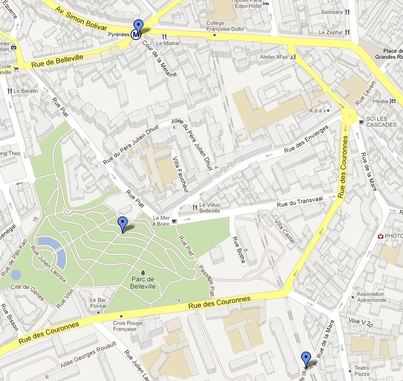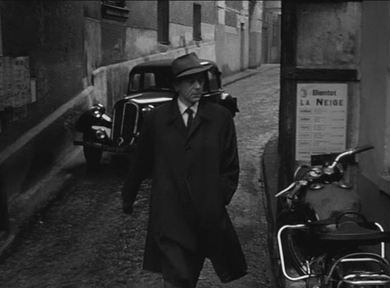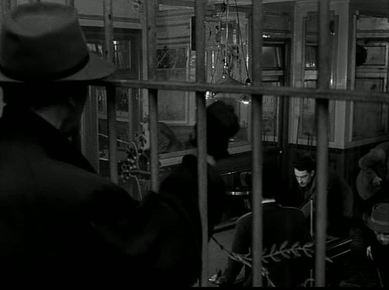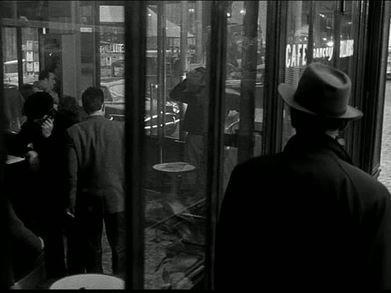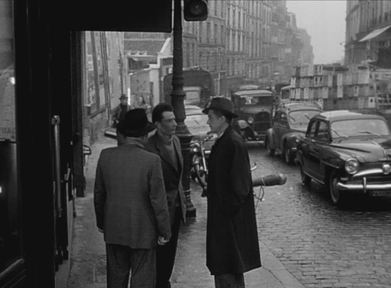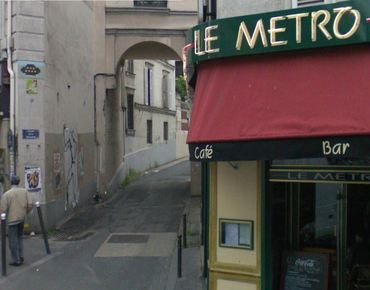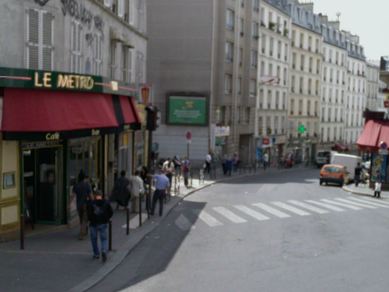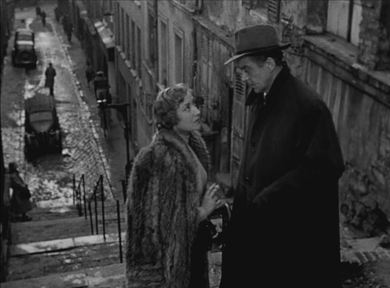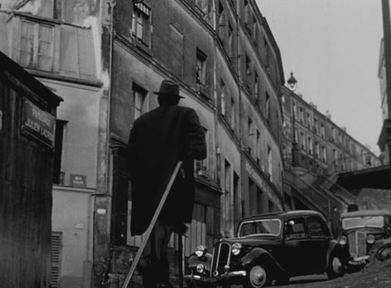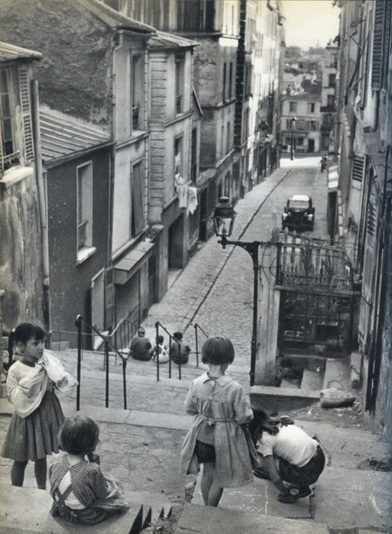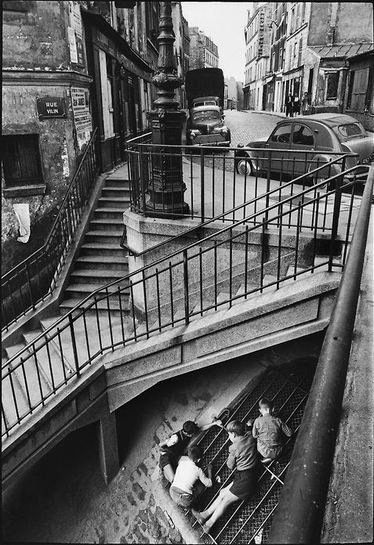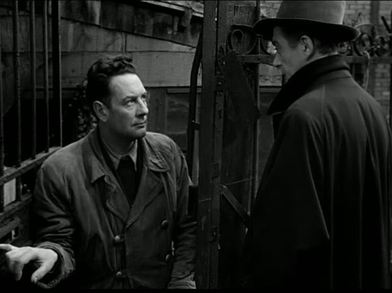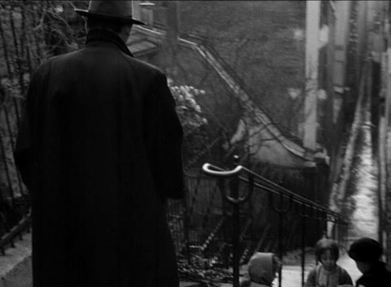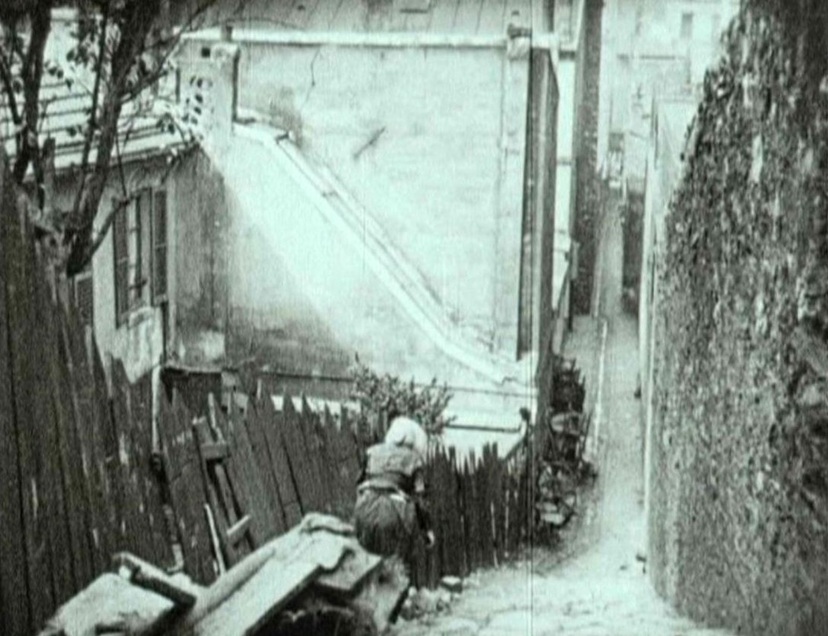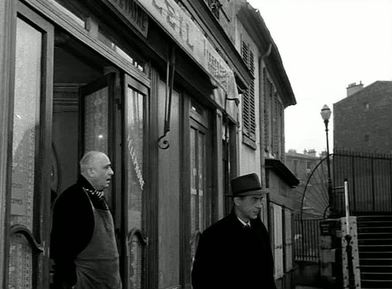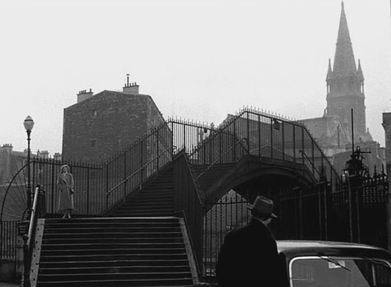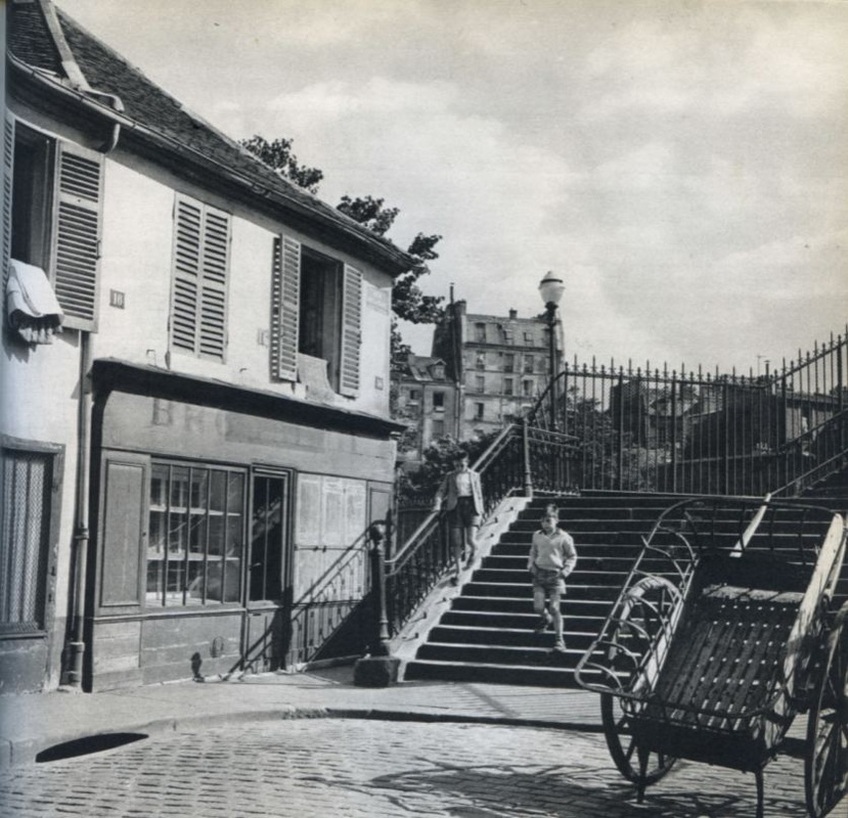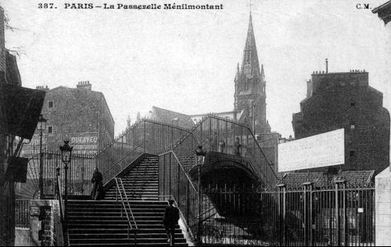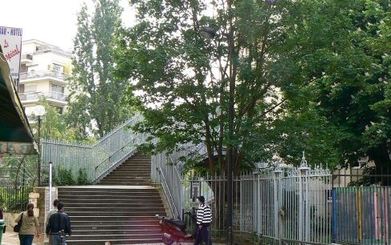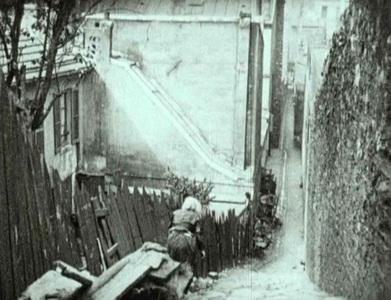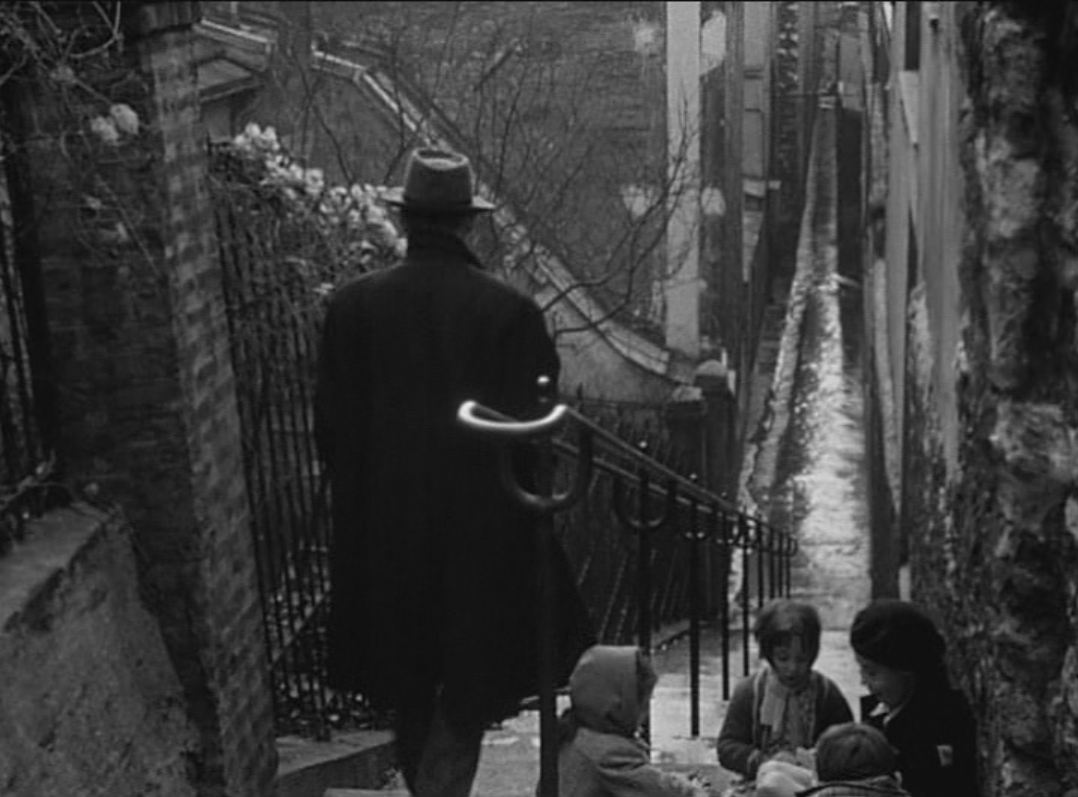Du rififi chez les hommes - reading topotropically
1/ chronotope, chronotrope and topotrope
The heist in Du rififi chez le hommes (Jules Dassin 1955) - hereinafter Rififi - is the centre of the film, both chronologically - it takes place half way through - and topographically - the establishment they rob (Mappin and Webb) is the most central of the film's principal locations, close to the centre of the outward spiralling arrangement of arrondissements that is Paris:
The heist in Du rififi chez le hommes (Jules Dassin 1955) - hereinafter Rififi - is the centre of the film, both chronologically - it takes place half way through - and topographically - the establishment they rob (Mappin and Webb) is the most central of the film's principal locations, close to the centre of the outward spiralling arrangement of arrondissements that is Paris:
As the notebook below indicates, the robbery is meticulously mapped and timed:
We have here a chronotope, both in a strict sense that spatial and temporal indicators are fused into one image, and in a looser sense of the term commonly derived from Bakhtin's writing on literature:
'In the literary artistic chronotope, spatial and temporal indicators are fused into one carefully thought-out, concrete whole. Time, as it were, thickens, takes on flesh, becomes artistically visible; likewise, space becomes charged and responsive to the movements of time, plot, and history. This intersection of axes and fusion of indicators characterizes the artistic chronotope.
'The chronotope in literature has an intrinsic generic significance. It can even be said that it is precisely the chronotope that defines genre and generic distinctions, for in literature the primary category in the chronotope is time. The chronotope as a formally constitutive category determines to a significant degree the image of man in literature as well. The image of man is always intrinsically chronotopic.'
M.M. Bakhtin, ‘Forms of time and of the chronotope in the novel: notes toward a historical poetics’, in The Dialogic Imagination (Austin: University of Texas Press, 1981), pp.84-85.
'In the literary artistic chronotope, spatial and temporal indicators are fused into one carefully thought-out, concrete whole. Time, as it were, thickens, takes on flesh, becomes artistically visible; likewise, space becomes charged and responsive to the movements of time, plot, and history. This intersection of axes and fusion of indicators characterizes the artistic chronotope.
'The chronotope in literature has an intrinsic generic significance. It can even be said that it is precisely the chronotope that defines genre and generic distinctions, for in literature the primary category in the chronotope is time. The chronotope as a formally constitutive category determines to a significant degree the image of man in literature as well. The image of man is always intrinsically chronotopic.'
M.M. Bakhtin, ‘Forms of time and of the chronotope in the novel: notes toward a historical poetics’, in The Dialogic Imagination (Austin: University of Texas Press, 1981), pp.84-85.
Bakhtin’s chronotope is a simple enough concept that can become complicated in its applications. One unexpectedly fruitful complication is the occasional typographic error that replaces the chronotope with a chronotrope. The chronotrope, if it really were a tool available to us, would be a very useful thing to have. It would be a name for the reconfiguration of a temporal given, and would be particularly useful if we could establish a taxonomy of chronotropes.
But even more useful - for me at least - would be the complementary term topotrope, a name for the reconfiguration of a spatial given. (Establishing a taxonomy of topotropes is one of the longer term aims of the Cine-Tourist project.)
But even more useful - for me at least - would be the complementary term topotrope, a name for the reconfiguration of a spatial given. (Establishing a taxonomy of topotropes is one of the longer term aims of the Cine-Tourist project.)
In heist films, the relation of planning to execution is the primary chronotope. A discrepancy between planning and execution can generate suspense and initiate the dénouement. When place and time are discrepant, as in the narration of Bob le Flambeur, for example, space is opened up for the primary chronotope to be troped upon (but I shan't be calling that a chronotopotrope). If it is time that is troped, as in the pre-enactment of the heist in Bob le Flambeur, this is called a chronotrope. If it is place that is troped, as in Bob's mapping of the casino layout in white paint on grass, that is a topotrope:
2/ the map in the film
A topotropic reading might compare Bob's close-to-scale map of the heist to the map in a notebook of Rififi, and find in the difference an expression of key differences - between the personalities of the mappers, for example, or between ways in which each film uses the heist as mise-en-abyme. It would find that the Rififi heist-map matches the meticulous organisation of the film's movements in and around Paris, as if planning a heist and planning a shoot were the same sort of thing:
A topotropic reading might compare Bob's close-to-scale map of the heist to the map in a notebook of Rififi, and find in the difference an expression of key differences - between the personalities of the mappers, for example, or between ways in which each film uses the heist as mise-en-abyme. It would find that the Rififi heist-map matches the meticulous organisation of the film's movements in and around Paris, as if planning a heist and planning a shoot were the same sort of thing:
When, as in the two examples above, the map-en-abyme is a map made in the film, there is a strong identification with filmmaking itself as a cartographic activity.
A pre-existing map, either scrutinised by characters or simply positioned within their framing décor, argues rather for an identification between character and spectator, for both of whom maps are a part of their real world. Here is the first of the three other places with maps in Rififi:
A pre-existing map, either scrutinised by characters or simply positioned within their framing décor, argues rather for an identification between character and spectator, for both of whom maps are a part of their real world. Here is the first of the three other places with maps in Rififi:
A place-centred reading might here bring out the film's thematics of national identity, with the regional Frenchness of the protagonist -Tony 'le Stéphanois' (i.e. he is from Saint Etienne) - set against a variety of names denoting foreignness: Le Suédois, Ferrati, Grutter, Teddy le Levantin, even Mappin & Webb. It could make something of director Jules Dassin's own complicated identity, an exiled American son of Russian-Jewish immigrants, with a French name, who in Rififi plays 'César le Milanais', an Italian who can't speak French but dies because he talked too much (Dassin appears as 'Perlo Vita' in the credits.) Such a reading would be interested in this early appearance of a map of France, even if the map principally serves to identify this as a café just like any other. Like this one, for example, in Jacques Becker's Touchez pas au grisbi (1954):
In the second place with maps, they are familiar street furniture, positioned at the entrance to Port Royal station, and there is a further map on the platform. This is the ligne de Sceaux, which would later become part of the RER:
Tony Le Stéphanois has no need to consult these maps, knowing exactly the direction to be taken by the person he is following. This journey out to the suburbs is economically presented: the two get on at Port Royal and two shots later get are shown leaving the station at Saint Rémy lès Chevreuse.
Here the film's own ability to read a map might be called into question, since the lights on the panel above the platform indicate that the arriving train - the one which the two men will take - is not going to Saint Rémy lès Chevreuse but, via the branch line, to Robinson. (My reading here is perhaps too close.)
Here the film's own ability to read a map might be called into question, since the lights on the panel above the platform indicate that the arriving train - the one which the two men will take - is not going to Saint Rémy lès Chevreuse but, via the branch line, to Robinson. (My reading here is perhaps too close.)
The last maps in the film are at the entrance to La Chapelle station, on Ligne 2 of the métro (part of the elevated section to the North):
These maps are passed in the course of Tony's breakneck car journey back from St Rémy, and hardly attract our attention, given the intensity of this climactic sequence.
3/ the map of the film
For this over-close reader, at least, these unobserved maps stand for the unnoticed exactness in the plotting of that journey. Tony retrieves Tonio from a café in Versailles and delivers him to his mother in Ménilmontant. Though what we see is a rapid and fragmentary montage of views inside and from the car (seventy-four shots in two and a half minutes - an ASL of 2 seconds), every identifiable element of the ground covered is topographically correct. You can follow the journey stage by stage in the breakdown of exteriors below (see number 33), and here is a rudimentary tracing of it on a Google Map:
For this over-close reader, at least, these unobserved maps stand for the unnoticed exactness in the plotting of that journey. Tony retrieves Tonio from a café in Versailles and delivers him to his mother in Ménilmontant. Though what we see is a rapid and fragmentary montage of views inside and from the car (seventy-four shots in two and a half minutes - an ASL of 2 seconds), every identifiable element of the ground covered is topographically correct. You can follow the journey stage by stage in the breakdown of exteriors below (see number 33), and here is a rudimentary tracing of it on a Google Map:
The map of a film's locations will take one of two basic forms: the tracing of an itinerary, as above, and the plotting of points, as below:
View Du rififi chez les hommes in a larger map
This map shows the distribution of all the film's locations across and around the city, but it doesn't differentiate between briefly visited places of minor importance and places where key actions are played out at length (i.e. it's not a chronotope.)
Such a map does give us a sense of the film's spread, and is especially informative when compared to the location maps of other films. We would, for example, be able to configure more exactly some key differences between Rififi and Bob le flambeur if we could compare their maps (I'm working on the Bob map as we speak).
Such a map does give us a sense of the film's spread, and is especially informative when compared to the location maps of other films. We would, for example, be able to configure more exactly some key differences between Rififi and Bob le flambeur if we could compare their maps (I'm working on the Bob map as we speak).
Mappin and Webb - here the anglophone in me can't help but hear mapping (and even webbing) behind the choice of target for the heist, but we must let that pass - on the rue de la Paix is the topographic centre of the film, a real place documented in detail. Its counterpart is the L'Age d'or nightclub, a fictional place that centres the film generically, in the gangster milieu. Though the interiors, where most of the related action takes place, are studio creations (signed Trauner), the exterior of the club is real, at 59b rue Pigalle. The two brief shots of Tony in the street against a backdrop of neon briefly connect Rififi with other Pigalle-set crime films of the period, such as Bob le Flambeur or Le Long des trottoirs:
The club in Pigalle is to the north of the map of the film. A little further north (on the other side of Montmartre), is the home of one of the robbers, Ferrati. Jo and his family live to the east, in Ménilmontant. We don't see where Tony lives, but the film opens with him at a café in the fifth arrondissement, to the south, where he is an habitué. With the kidnappers' villa to the west of Paris we might sense that the film is plotted to cover all points out from the central heist location, to the margins and beyond.
4/ Centres
My central figure needs qualifying. Narratively the heist is the film's core, and occurs topographically at the most central of the principal locations, but in relation to the actual city this is only relative. Though its arrangement of arrondissements from one to twenty spirals out to the city's edge, the point of departure cannot pretend to be the city's centre in anything but a numerical sense. The first arrondissement contains the Palais de Justice and Police Headquarters, the Louvre, the Palais Royal, the Tuileries, and the Halles centrales, but none of these can make an exclusive claim to be the heart of the city - Zola's 'ventre de Paris' , the Halles, is only its belly. The city's administrative centre and its cathedral are in the 4e, the country is governed from the 7e and 8e, and it is in the 8e that we find the city's omphalos, the obelisk in the middle of the place de la Concorde.
By contrast, when briefly Rififi goes to London - by means of back-projection - we are shown that city's indisputable centre, the still point of its turning world, Piccadilly Circus:
By contrast, when briefly Rififi goes to London - by means of back-projection - we are shown that city's indisputable centre, the still point of its turning world, Piccadilly Circus:
Dassin remembers here an earlier office overlooking Piccadilly Circus, from his preceding film Night and the City (1950):
As the protagonist's nemesis, Kristo is here centred both narratively and topographically.
Without covering as much territory as Rififi, Night and the City visits London like a determined cine-tourist - Saint Paul's, Covent Garden, Trafalgar Square, County Hall, the South Bank... ending up in the picturesque environs of Hammersmith Bridge:
Without covering as much territory as Rififi, Night and the City visits London like a determined cine-tourist - Saint Paul's, Covent Garden, Trafalgar Square, County Hall, the South Bank... ending up in the picturesque environs of Hammersmith Bridge:
Though it doesn't go there for its narrative climax, Rififi is similarly drawn to the river's edge. Many of its passing moments occur on or near bridges and banksides:
On a map, the river and its banks and bridges describe horizontal trajectories, but they often also serve to introduce motifs of verticality, of falling, above all. The end of Night and the City, when Fabian's body is thrown into the Thames, here rejoins a moment in Rififi:
5/ stairs
To dump Fabian's body into the river, Kristo's henchman had first to go up, via some stairs, to a place from which it could drop. This is the last of Night and the City's verticality-motifs, all figuring Fabian's fall.
Rififi shares this interest in verticality. Its first actualisation is the mechanical penguin that falls from a table:
Rififi shares this interest in verticality. Its first actualisation is the mechanical penguin that falls from a table:
The heist itself, drilling through to the jeweller's from the floor above (reached by lift) and dropping down through the hole, is the most obvious instance. Elsewhere the relation between planes is expressed diagonally, through inclines and staircases. (Rififi is a good candidate for an escalographic reading.)
Even if the protagonist's death comes as the endpoint of a largely horizontal trajectory, the car journey across Paris, that journey included inclines, first down towards the pont de Saint Cloud and then, at the end, up towards Ménilmontant. The last shot of the film shows the car awkwardly positioned at the angle of a zigzagging, sloping street (with his dead body still at the wheel):
Even if the protagonist's death comes as the endpoint of a largely horizontal trajectory, the car journey across Paris, that journey included inclines, first down towards the pont de Saint Cloud and then, at the end, up towards Ménilmontant. The last shot of the film shows the car awkwardly positioned at the angle of a zigzagging, sloping street (with his dead body still at the wheel):
More frequently, especially in interior scenes, staircases figure the relation between levels, often supplemented by the angled camera:
The complementarity of stairs and angled shots is most evident in the shootout, where characters reach different levels of the half-constructed house by staircases, while the angled camera connects those levels through its gaze:
Conclusion: identifications
I am concluding this piece with a more basic cine-touristic concern. This research began as an effort to identify all of the locations in Rififi, but two still elude me. One is the half-built house where the shooting takes place (taking up six and a half minutes of the film). I have no reason to doubt that it actually is near Saint Rémy lès Chevreuse, as the film states, but have not yet done the work to locate it exactly (I'll update this post when I have).
The other place to be identified is on screen for just one shot lasting ten seconds. It occurs in the montage sequence showing Tony in various locations as he seeks information to help find the kidnapped Tonio. Each shot in the sequence is emblematic of that quest, and the dissolves between them, signifying ellipsis, make each shot free standing, both chronologically and topographically. That said, of the four streets shown where Tony makes enquiries, three can be identified as in one specific area around what is now the parc de Belleville, which otherwise is not a topographic focus of the film (Jo le Suédois and family live a little to the south of these streets).
The other place to be identified is on screen for just one shot lasting ten seconds. It occurs in the montage sequence showing Tony in various locations as he seeks information to help find the kidnapped Tonio. Each shot in the sequence is emblematic of that quest, and the dissolves between them, signifying ellipsis, make each shot free standing, both chronologically and topographically. That said, of the four streets shown where Tony makes enquiries, three can be identified as in one specific area around what is now the parc de Belleville, which otherwise is not a topographic focus of the film (Jo le Suédois and family live a little to the south of these streets).
Each of the shots involves a camera movement that combines different views of the place filmed, most dramatically in the first, where the camera follows Tony as he turns the corner from a narrow impasse (the cour de la Métairie), past a café (from which he summons two acquaintances) and onto the rue de Belleville:
Here are the first and last views in the shot as they appear now:
The location of this first shot took some work to identify. The second posed no problem, since its two elements are among the most frequently photographed (and filmed) streets of the area. The shot begins looking down the passage Julien Lacroix, and the camera pans to look up towards the end of the rue Vilin, with its distinctive Y-shaped staircase:
I cannot show you what these streets look like now, since they were demolished in the 1980s when the parc de Belleville was created. Here, instead are two views by photographers: the passage Julien Lacroix (taken by Janine Niepce in 1957) and the escalier rue Vilin/rue Piat (by Willy Ronis in 1959):
The third place in this sequence I cannot track down. The camera pans from a conversation by a gateway to watch Tony going down a staircase. This staircase is in type like others in the Belleville-Ménilmontant area, but it corresponds to none that still exists, nor to any I have seen in the work of the area's photographers:
I have seen it once elsewhere, in this shot from Cavalcanti's Rien que les heures (1926), but in that film there are no clues as to where this might be:
The last shot (which comes after a brief scene at Jo's apartment that interrupts the sequence) like the second is of a place easy to identify from photographs and films. The camera pans from a café on the rue de la Mare to take in the famous, and still extant, footbridge that crosses the Petite Ceinture railway, with the spire of Notre Dame de la Croix in the background:
Here is this passerelle, photographed two years later by Janine Niepce:
And here it is, from the wonderful Paris Avant site (where every day an old postcard of Paris is posted next to a photograph of the same place today):
To return, in conclusion, to the problem of the third place:
One suggestion has been that if it's not Ménilmontant then it must be Montmartre, which would make of this sequence not the exploration of a specific locale but only the exploration of a motif - sloping streets and staircases. That motif, as we have seen, is strong in Rififi, connecting with a number of angled views of and from interior staircases, but it does seem strange that the film would here depart from its very strong impulse to be topographically consistent. Local historian Christian Wacrenier (author of the splendid Montmartre secret blog) doesn't think it looks like a Montmartrois stairway, but Guy Darol (creator of the brilliant Ménilmontant-devoted site Rue du Pressoir) doesn't recognise it as local to him.
For the moment I have no answer, but am left with a salutary reminder that the exact location of a place seen in a film is not the single key to the meaning of that place, or to the meaning of its place in a film. In both Rien que les heures and Rififi the camera has registered how the city organises its spaces, and each film has allowed that organisation to inform its own form. I doubt that our reading of what this place is will be very much changed when we know where it is.
(That said, if you know where it is, please let me know, here.)
For the moment I have no answer, but am left with a salutary reminder that the exact location of a place seen in a film is not the single key to the meaning of that place, or to the meaning of its place in a film. In both Rien que les heures and Rififi the camera has registered how the city organises its spaces, and each film has allowed that organisation to inform its own form. I doubt that our reading of what this place is will be very much changed when we know where it is.
(That said, if you know where it is, please let me know, here.)
See here for locations in Rififi so far identified.
